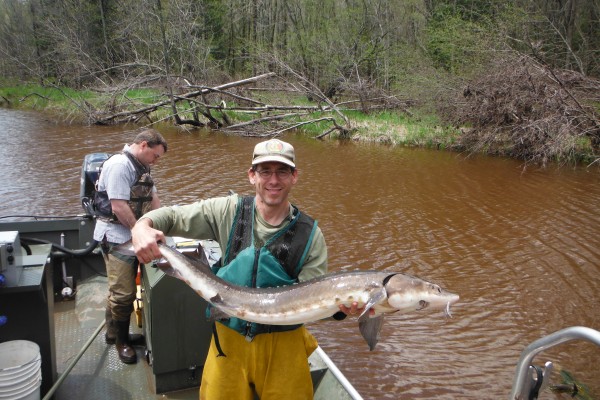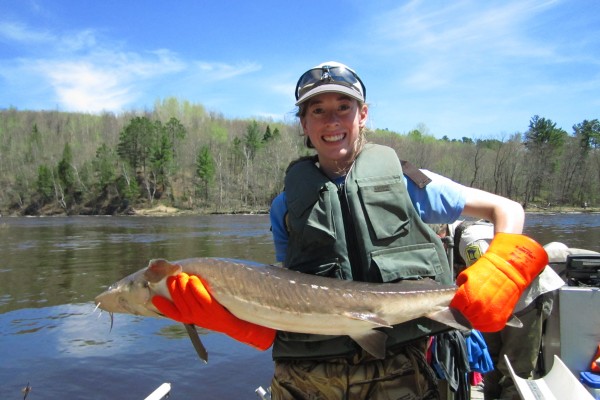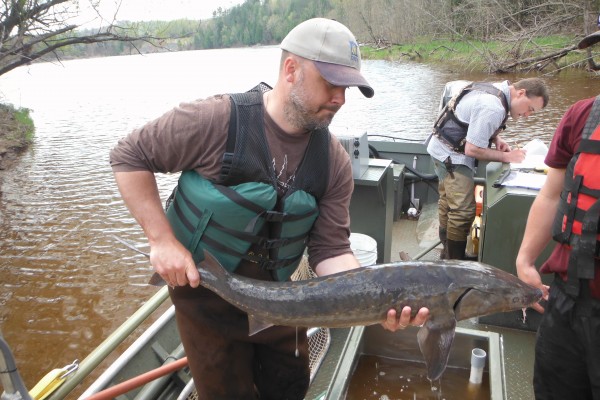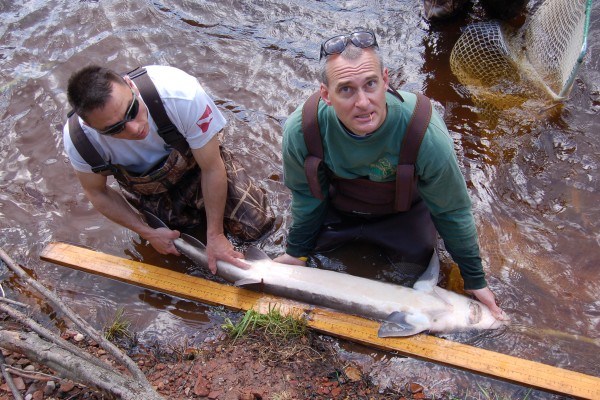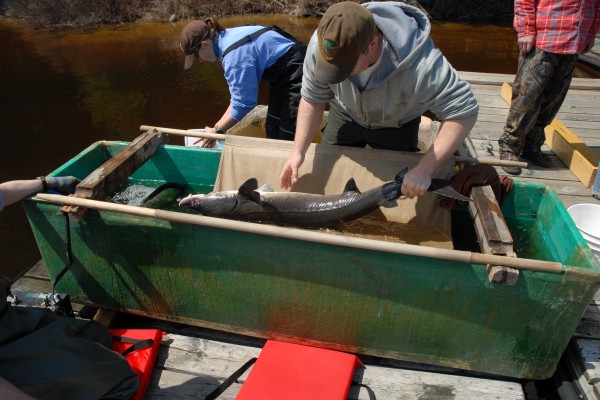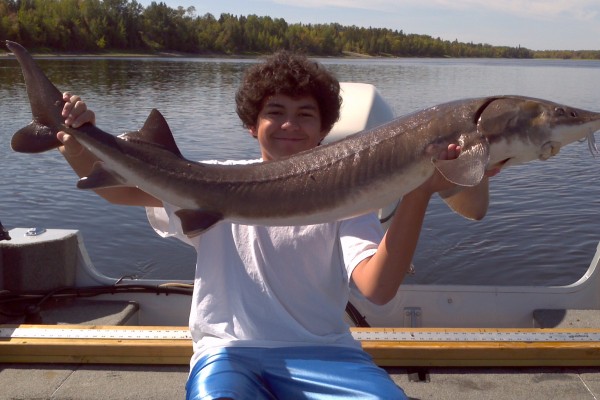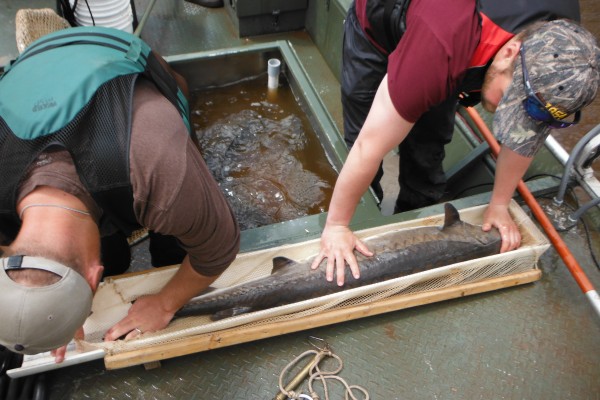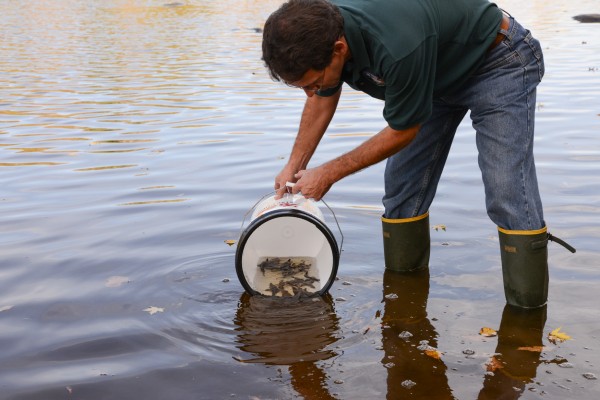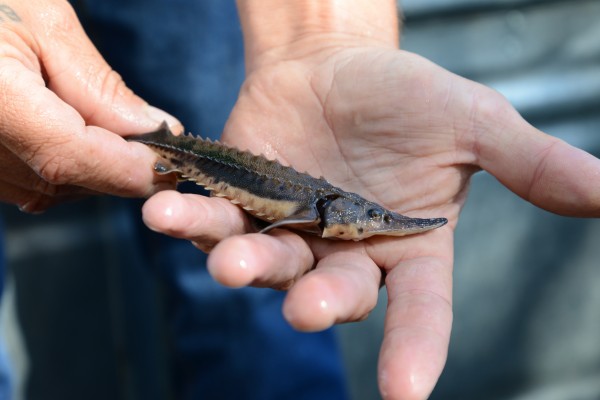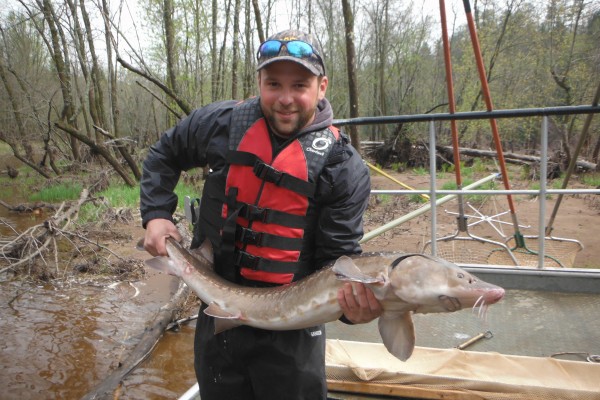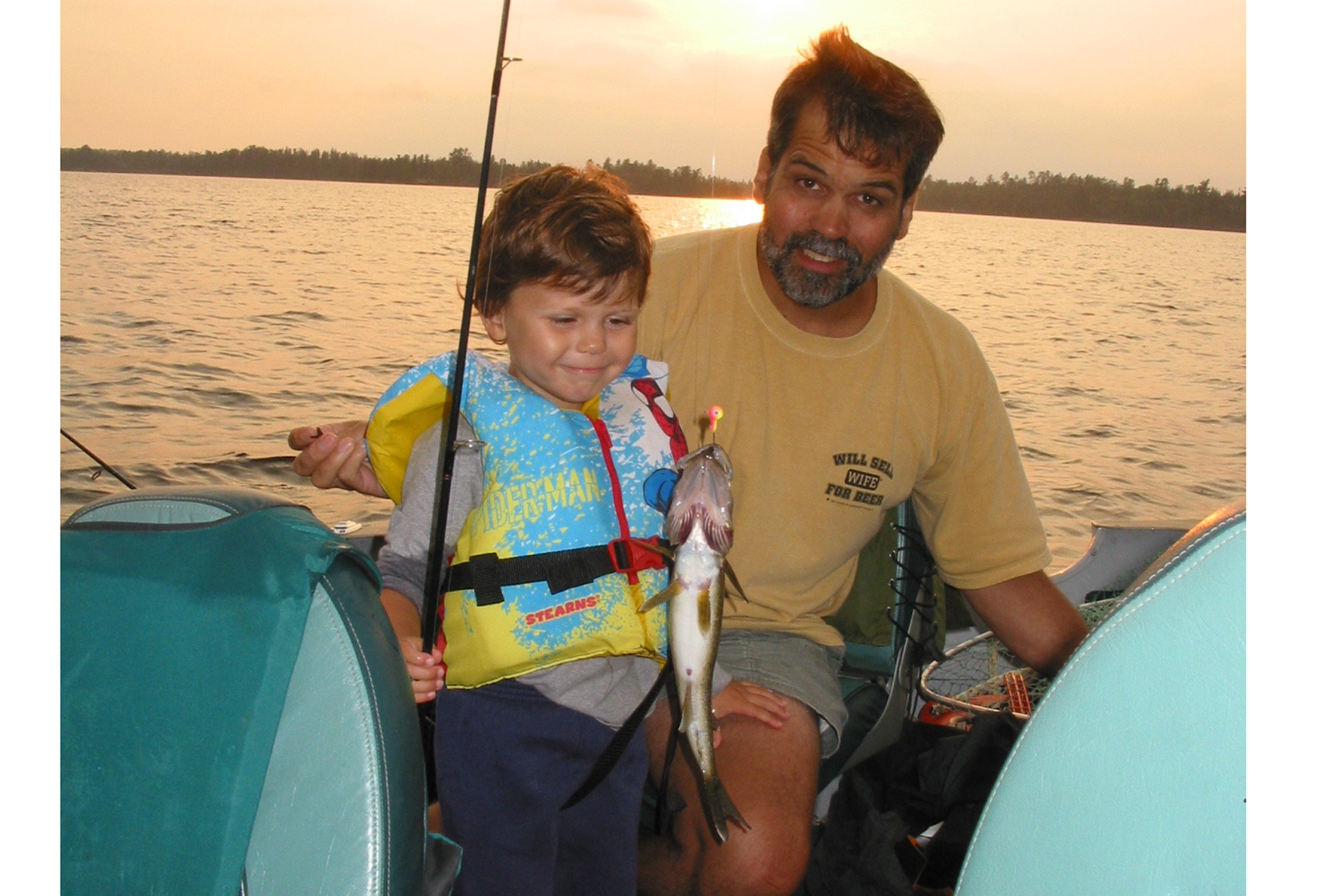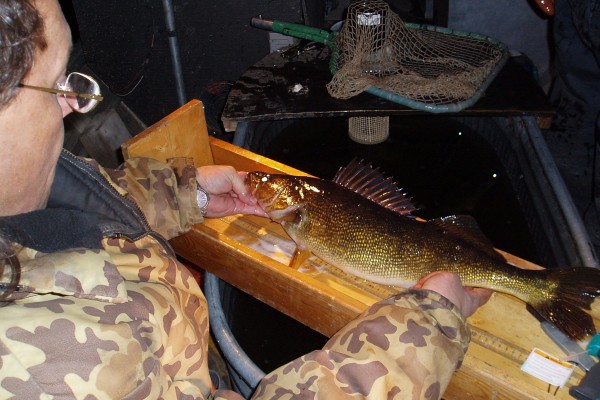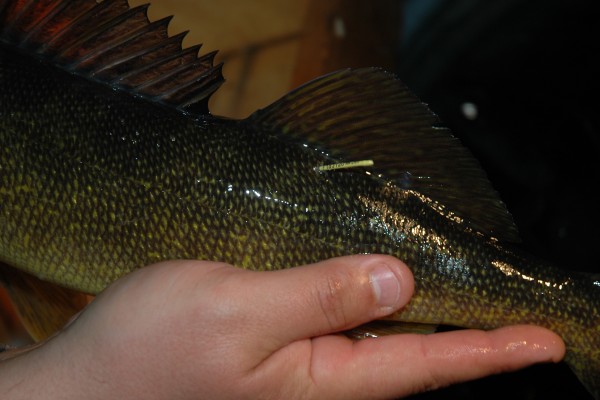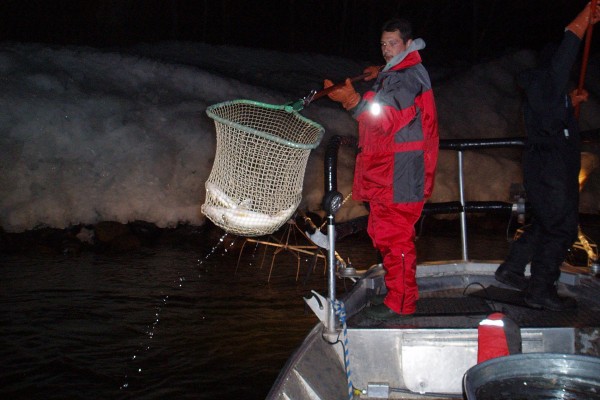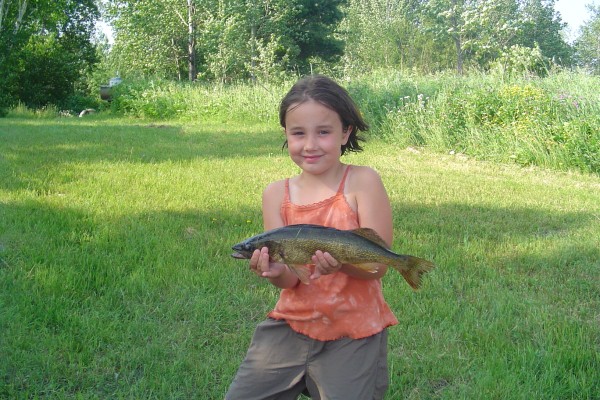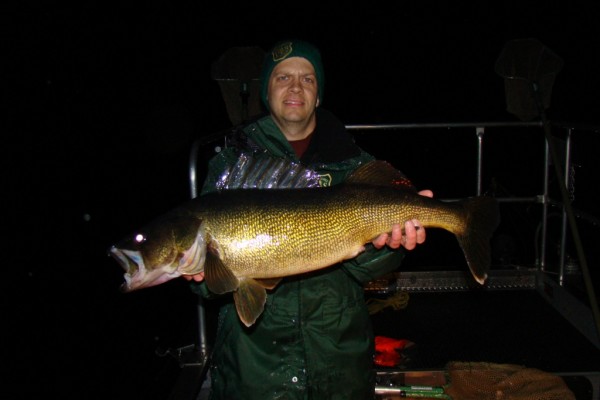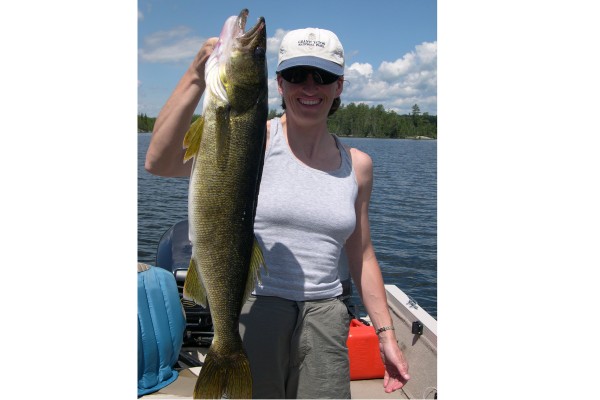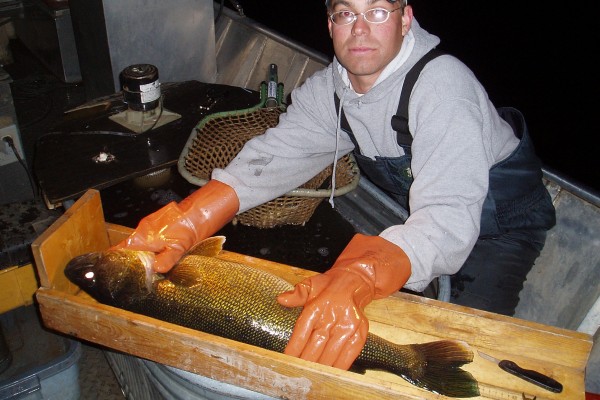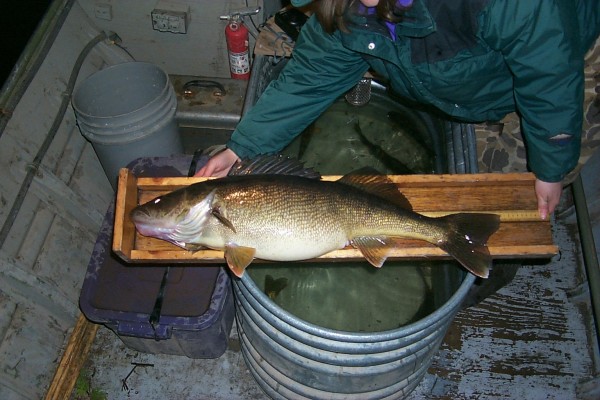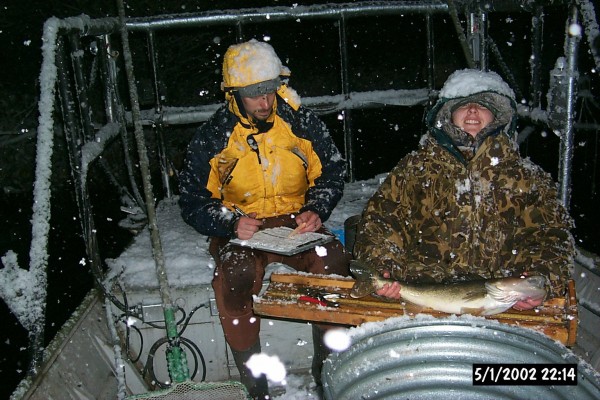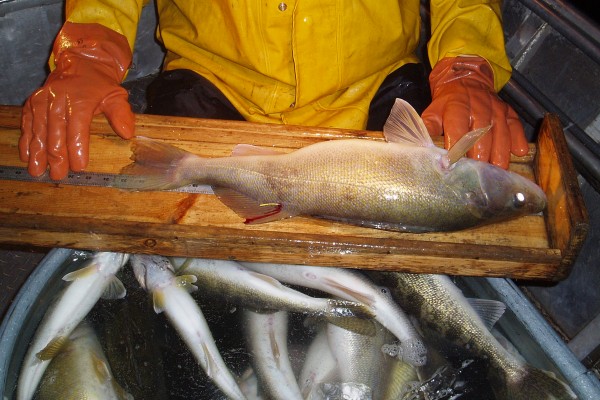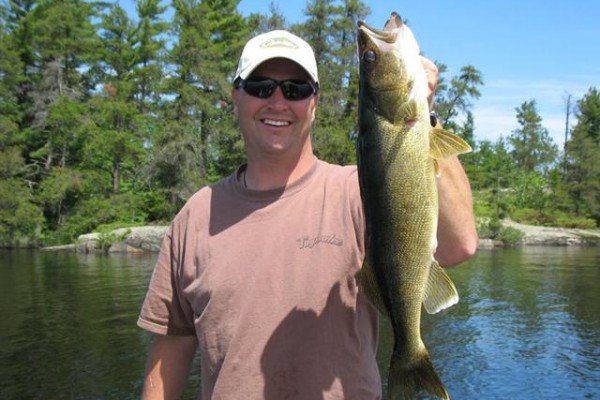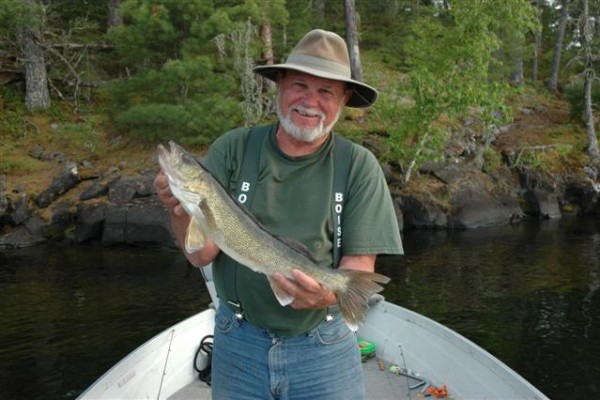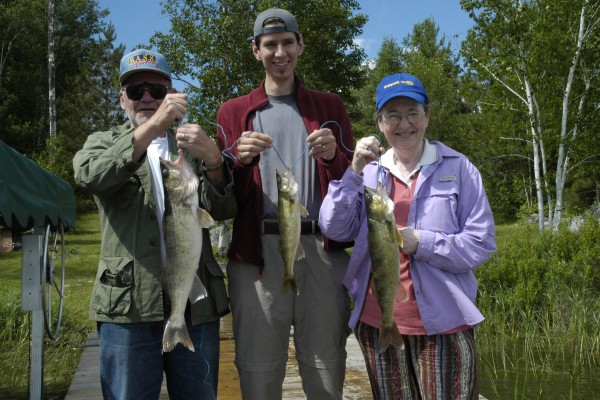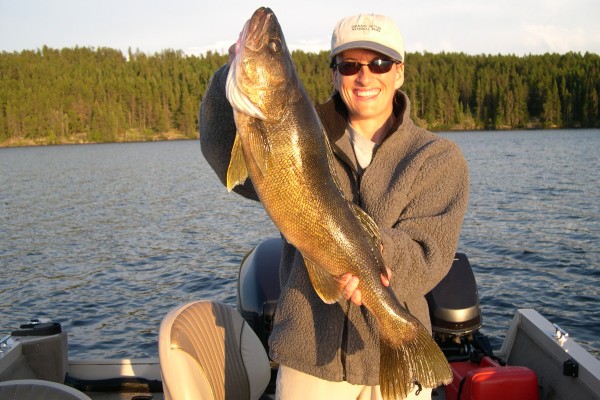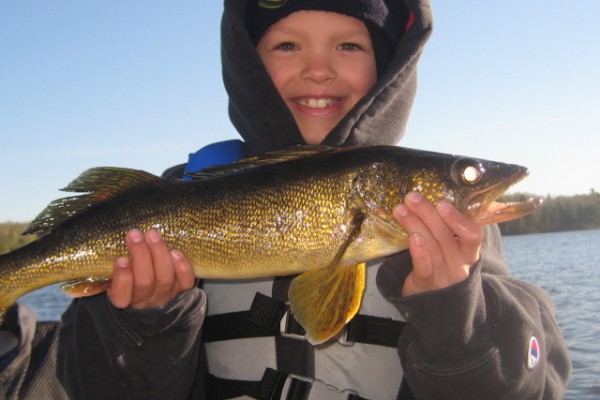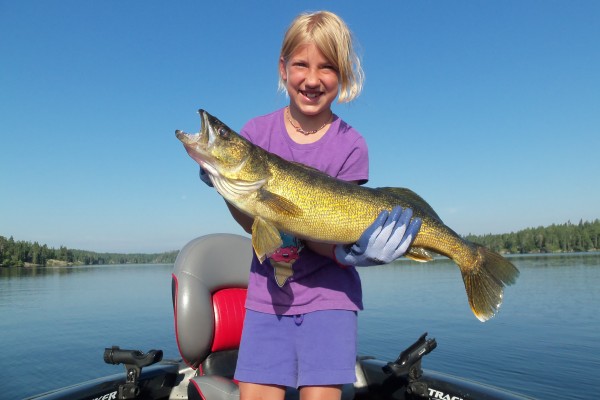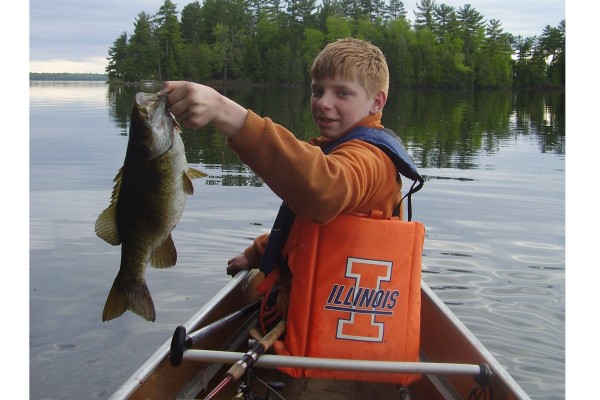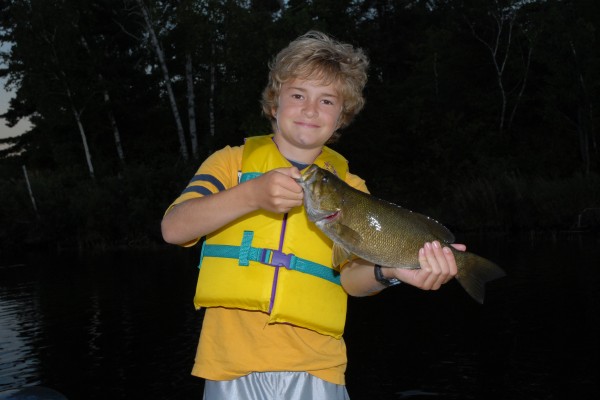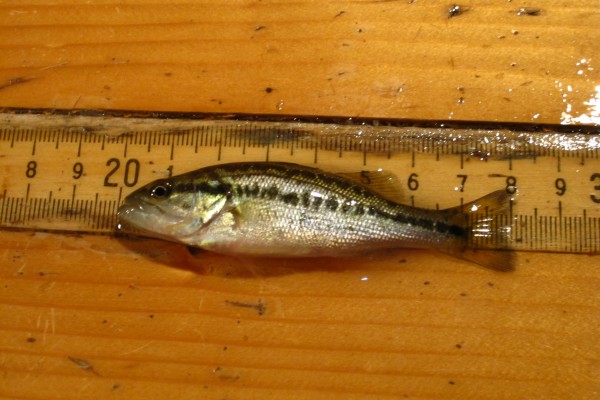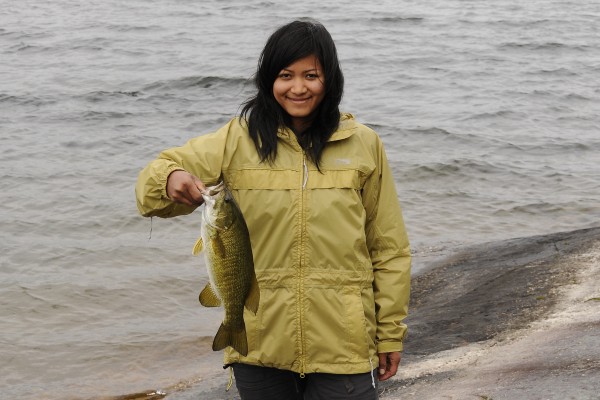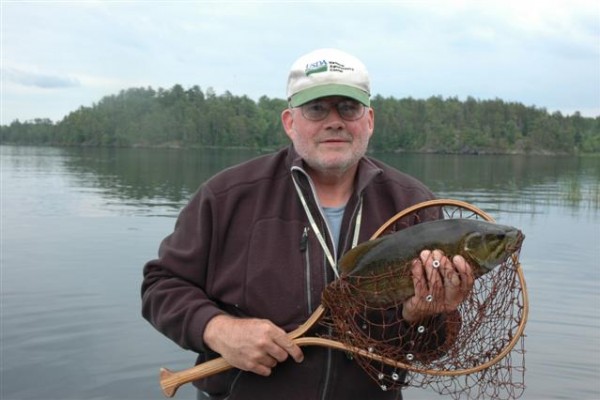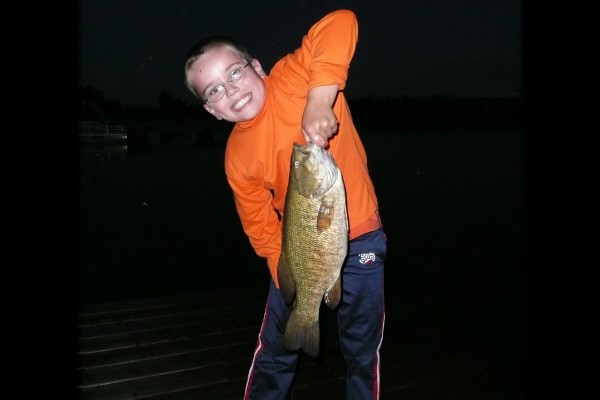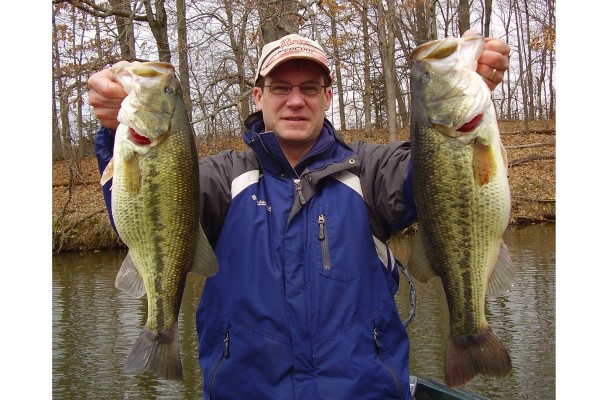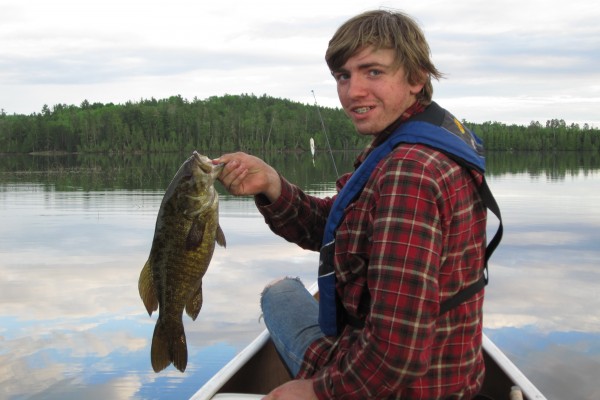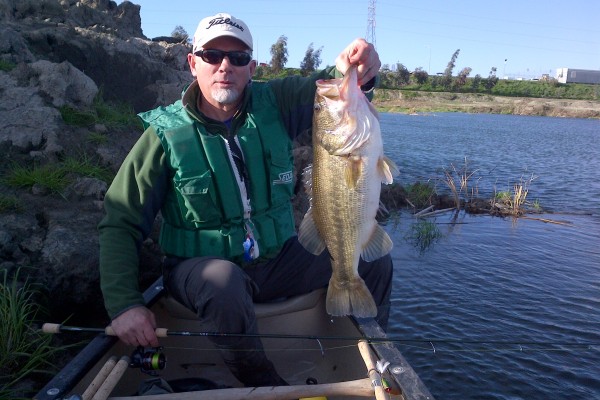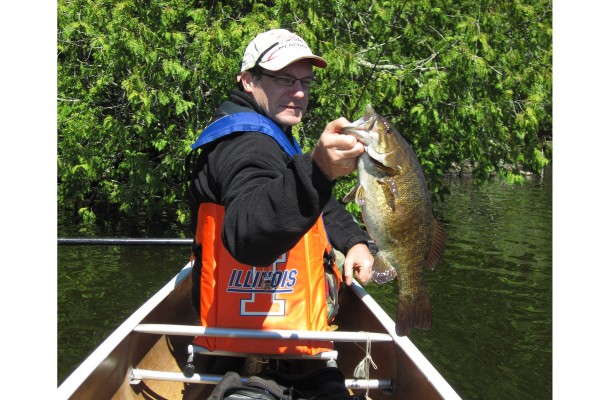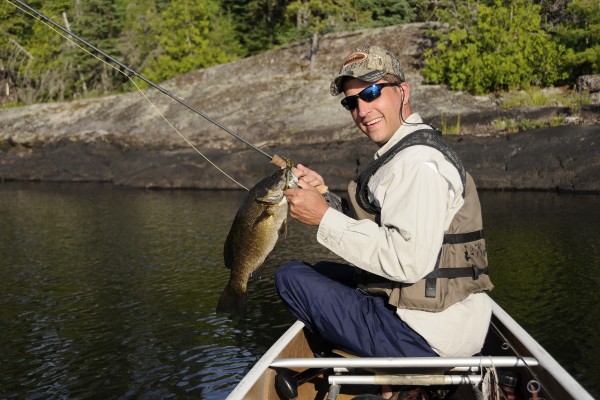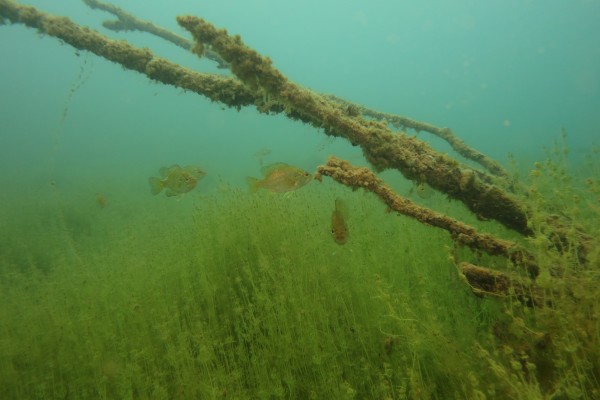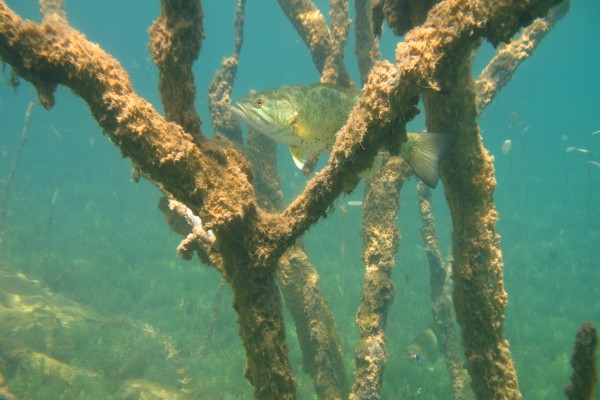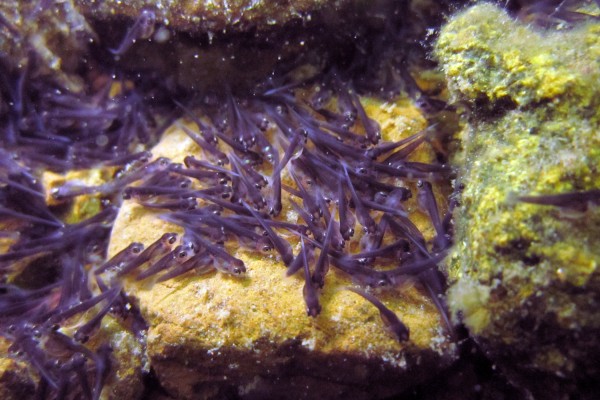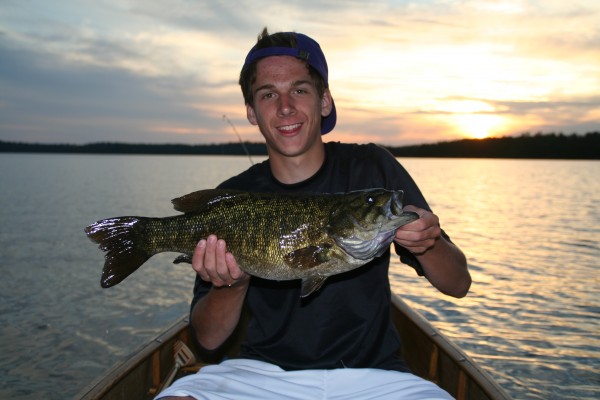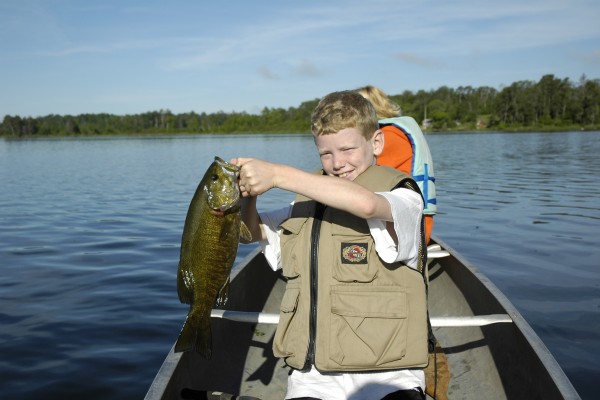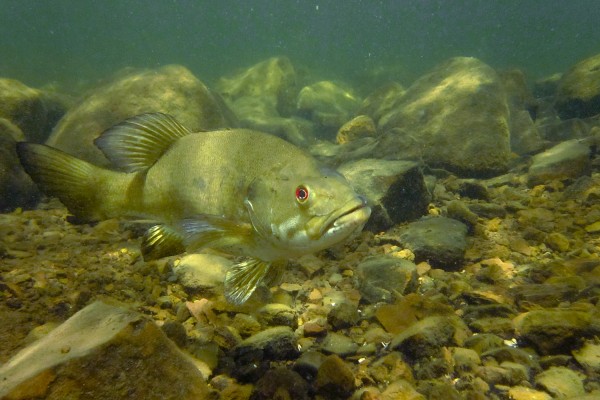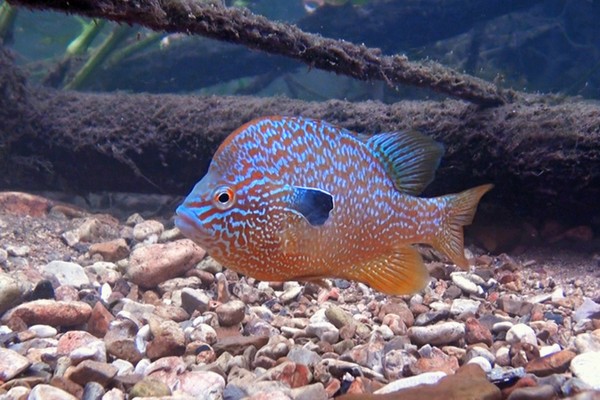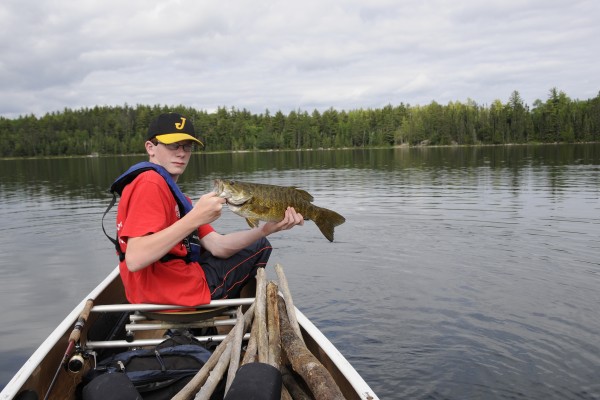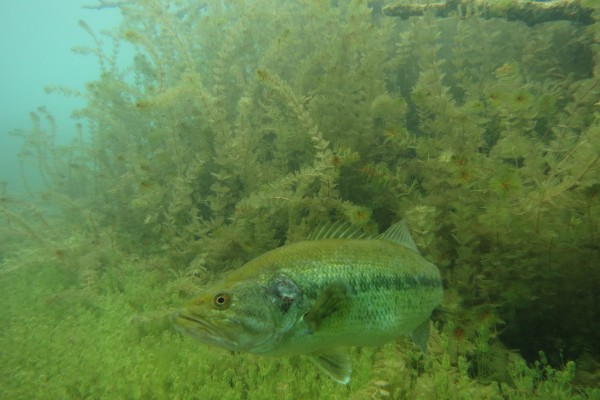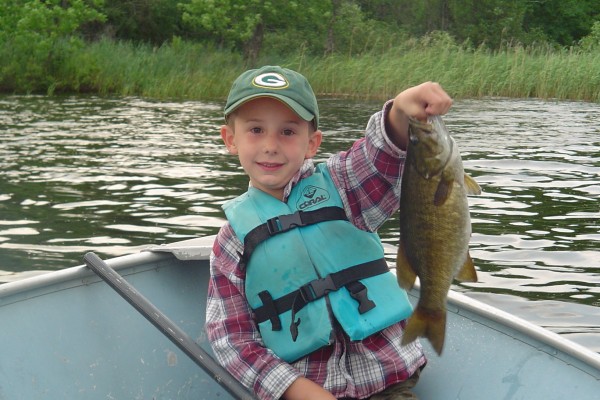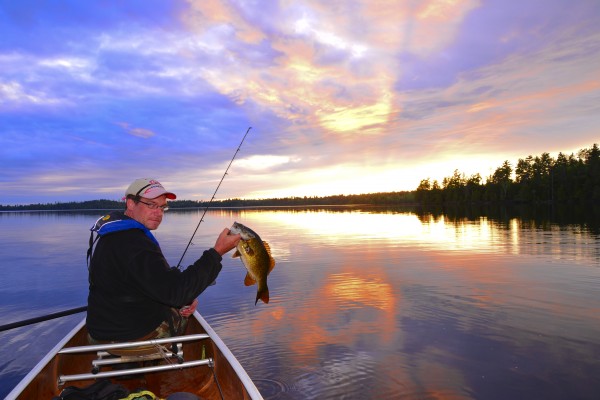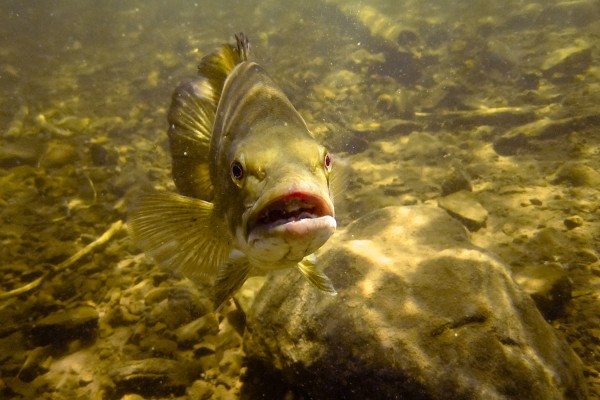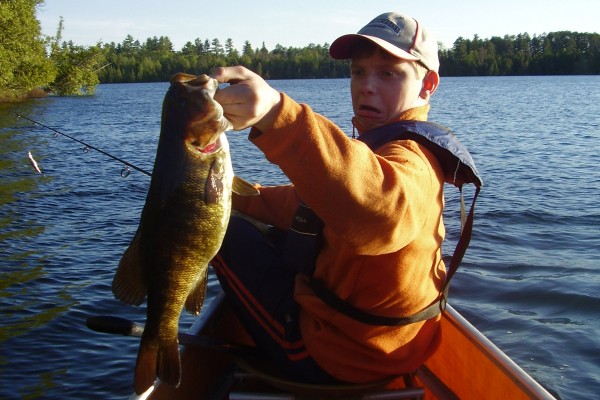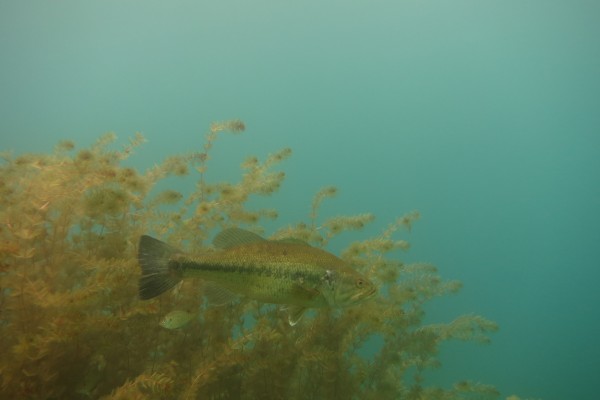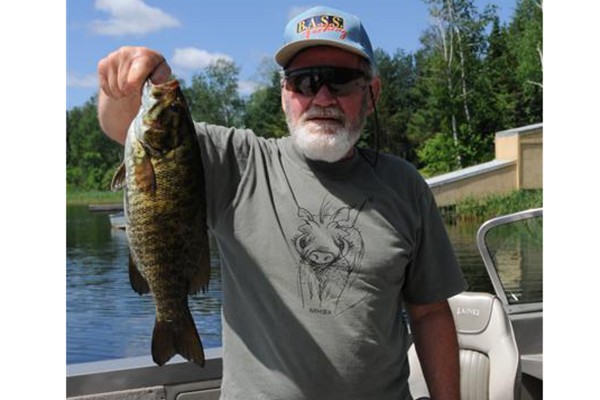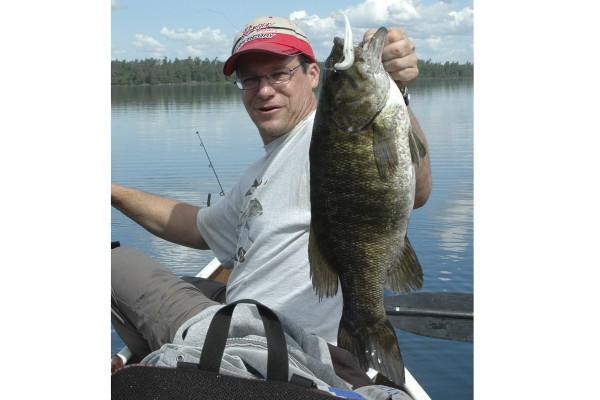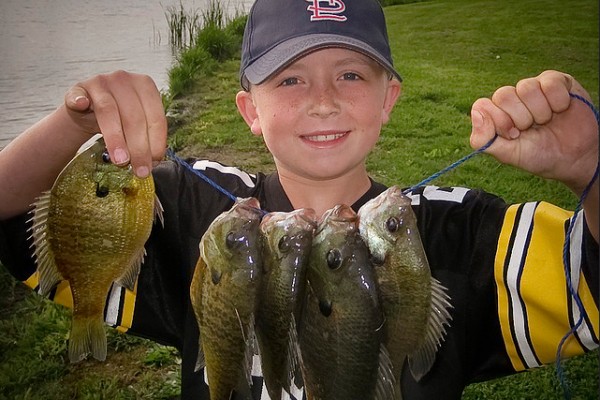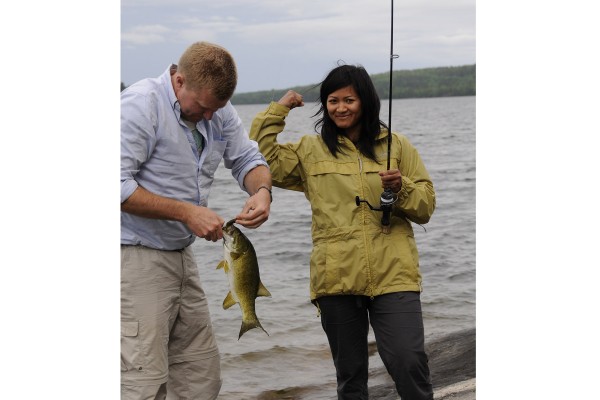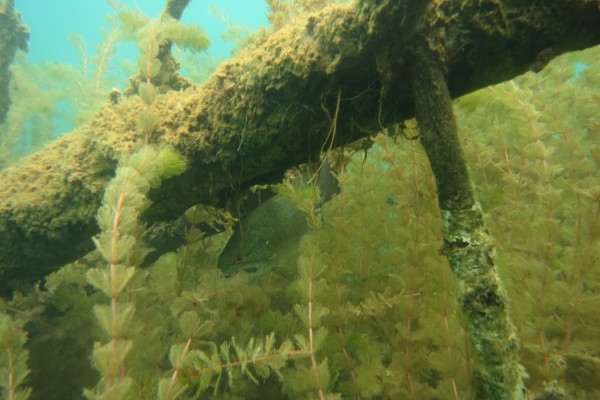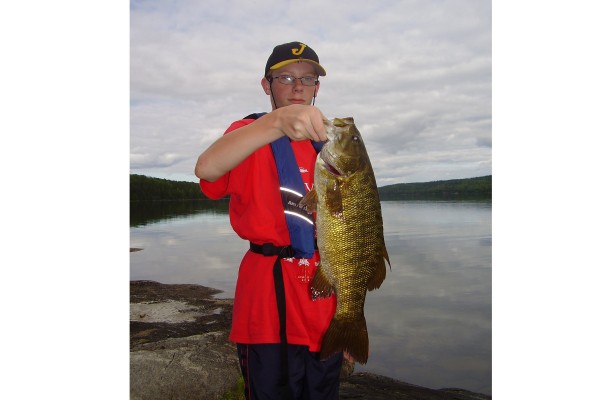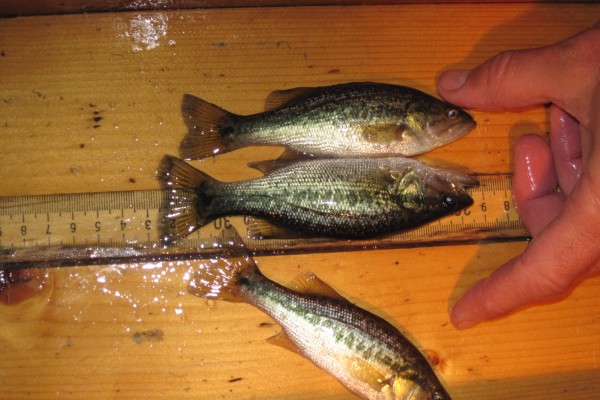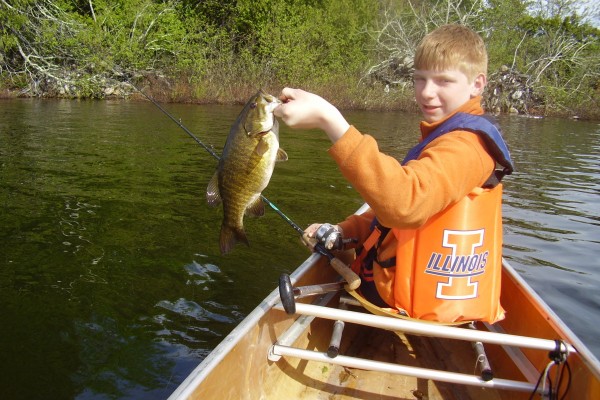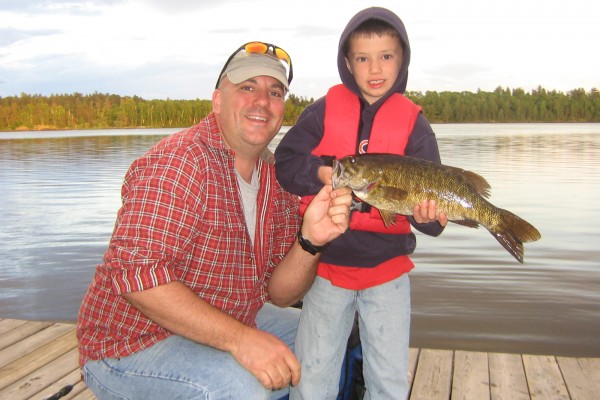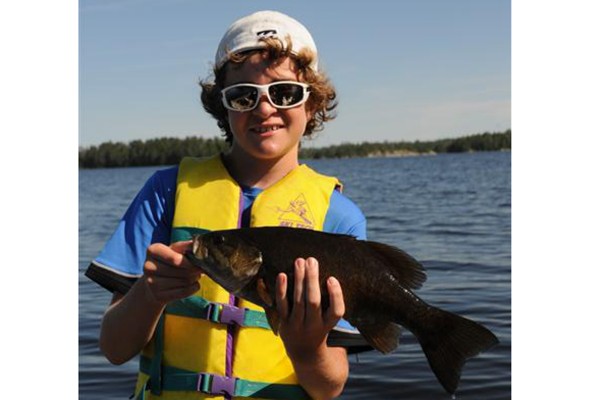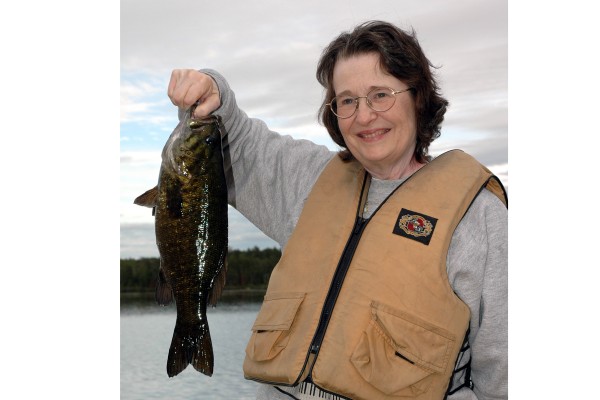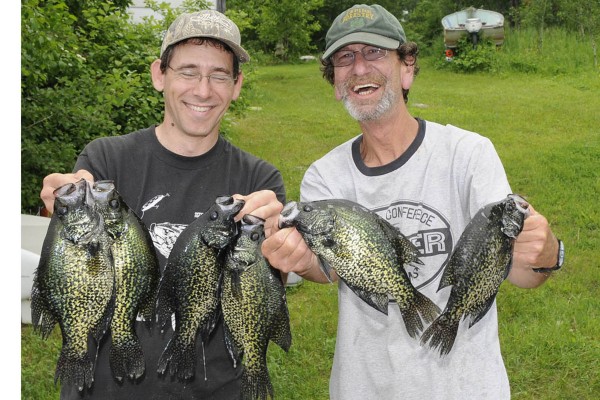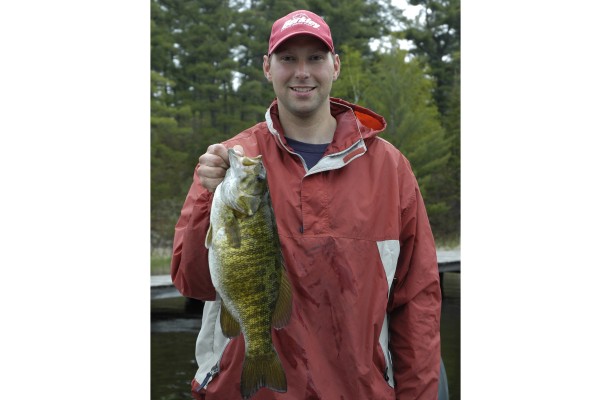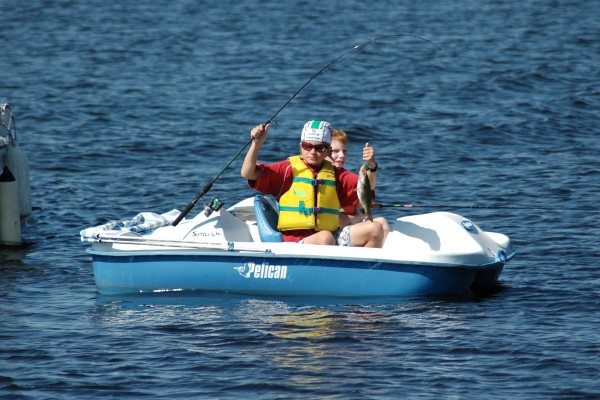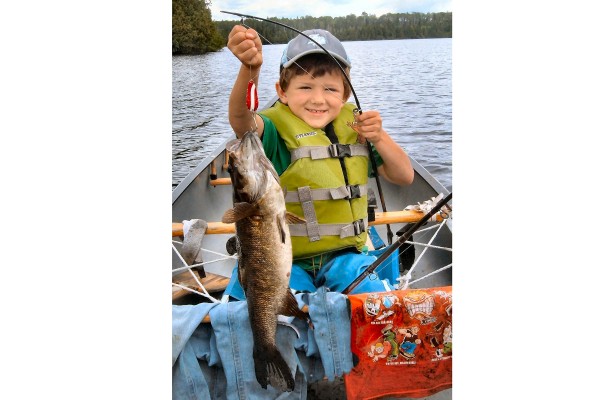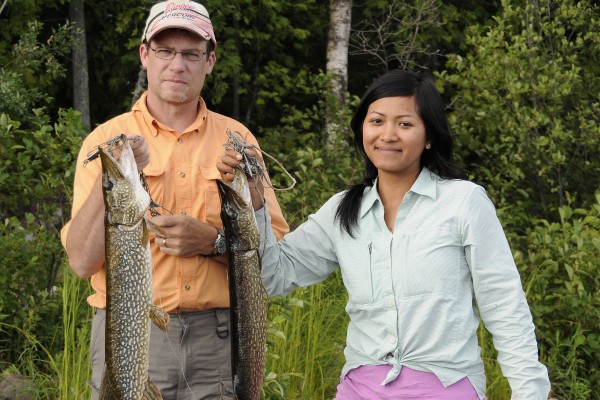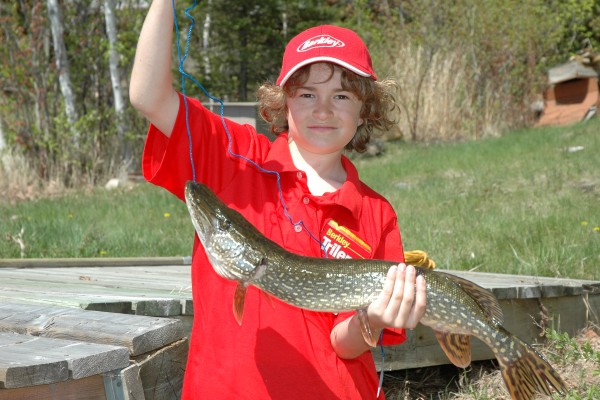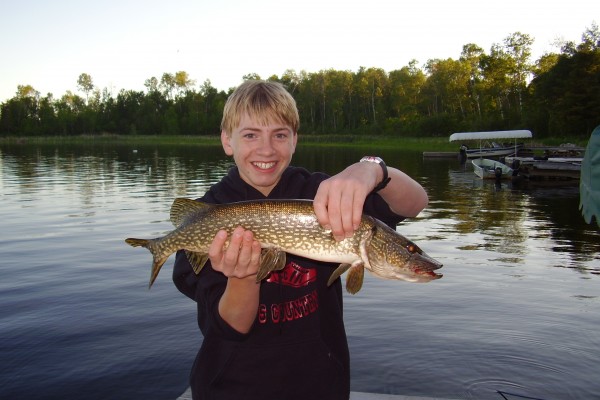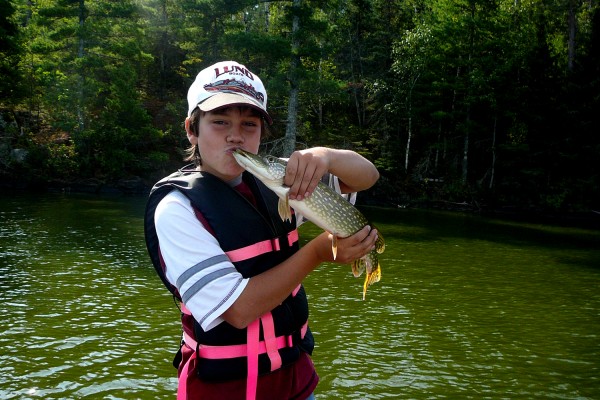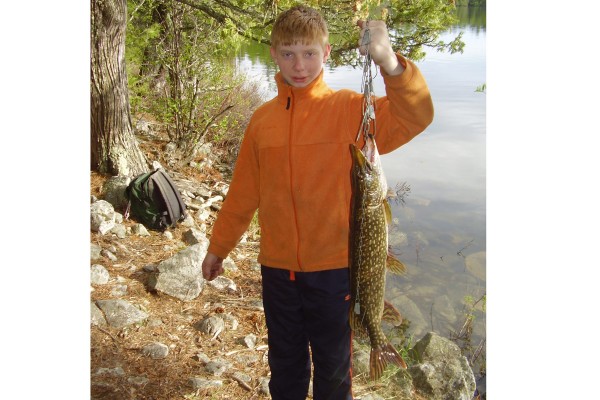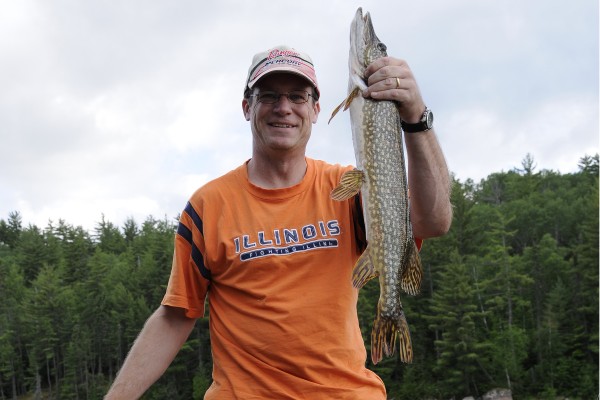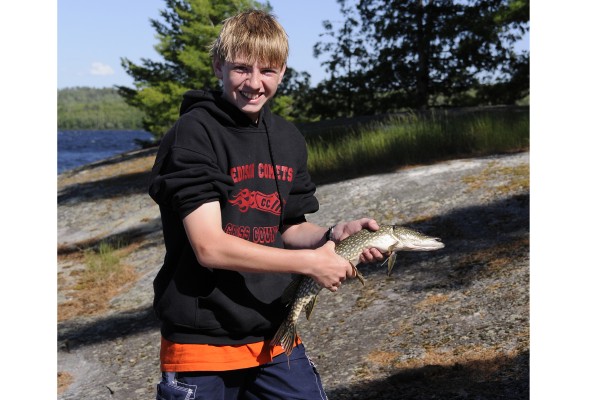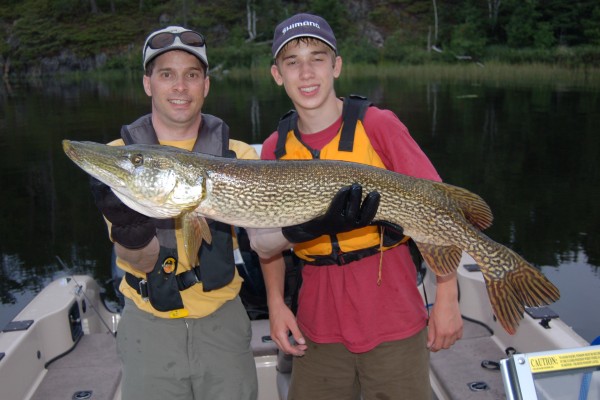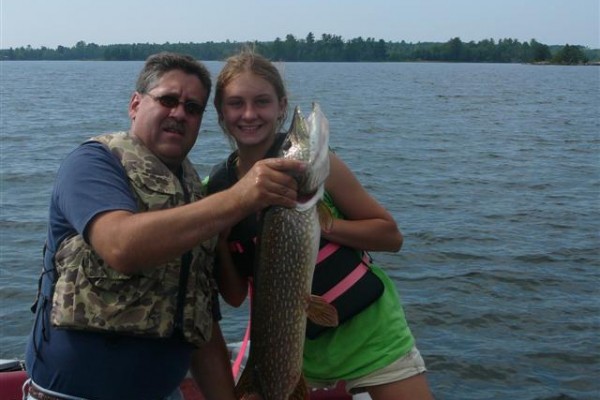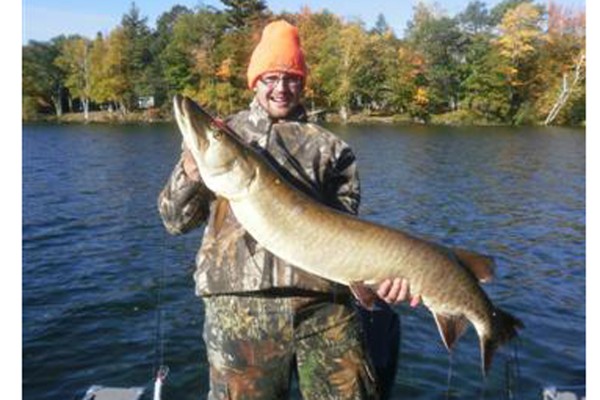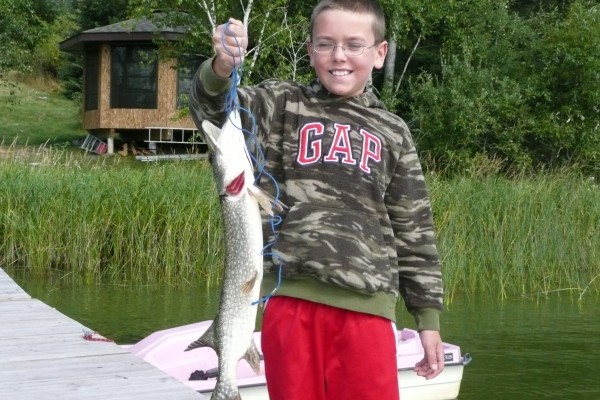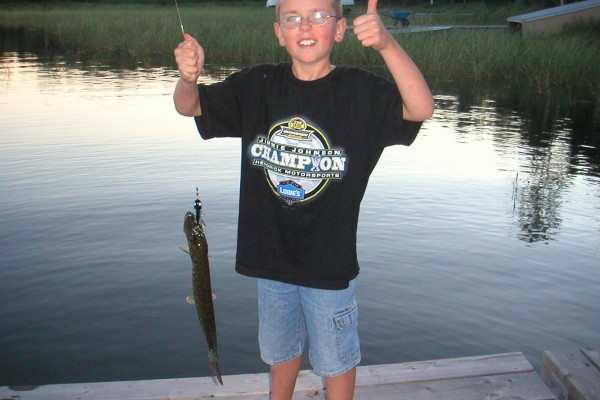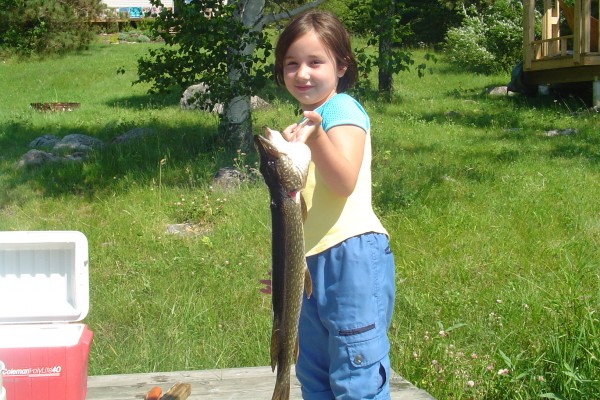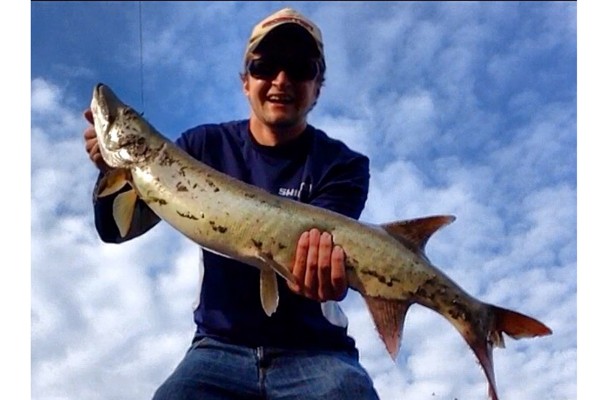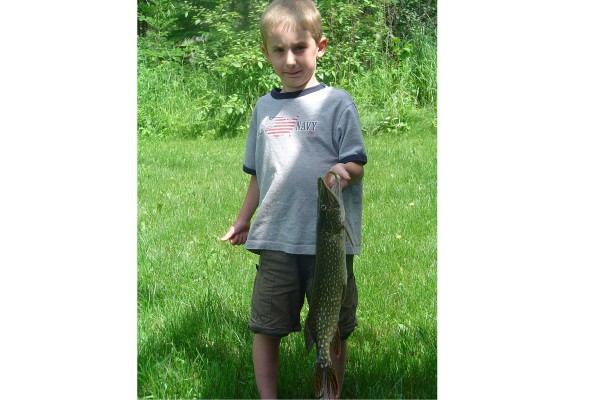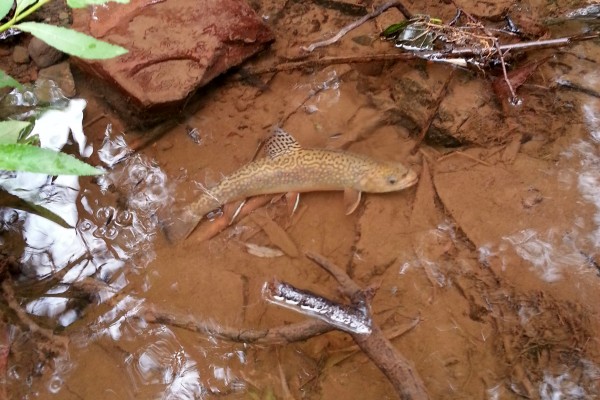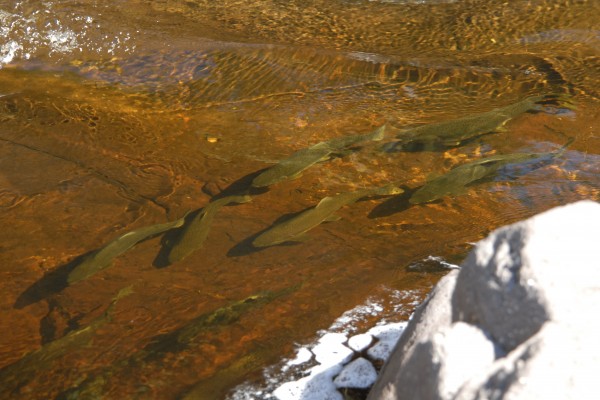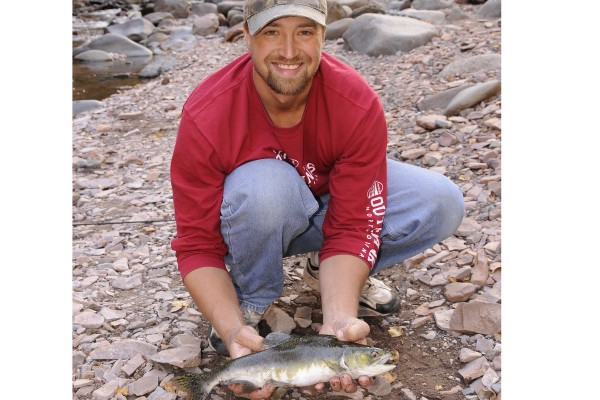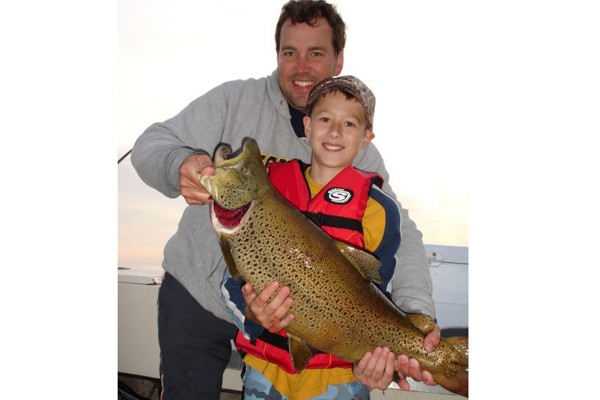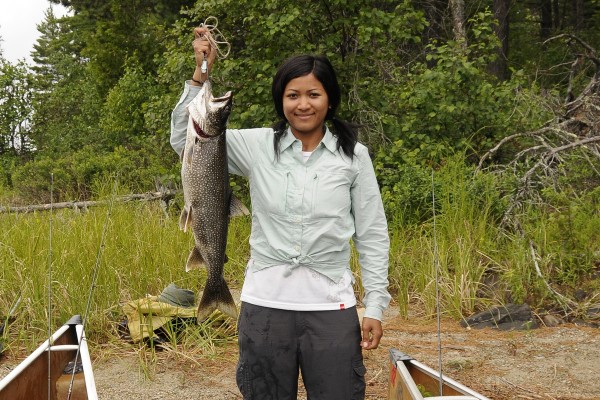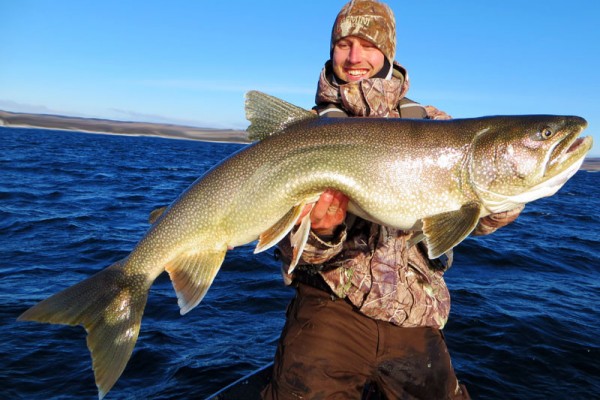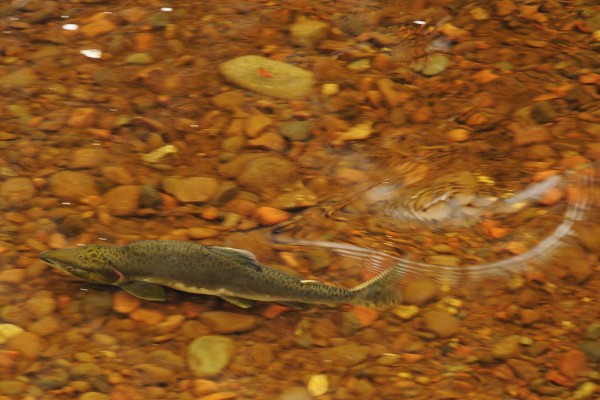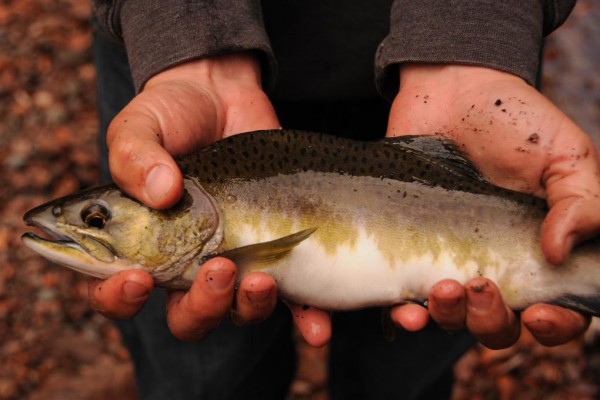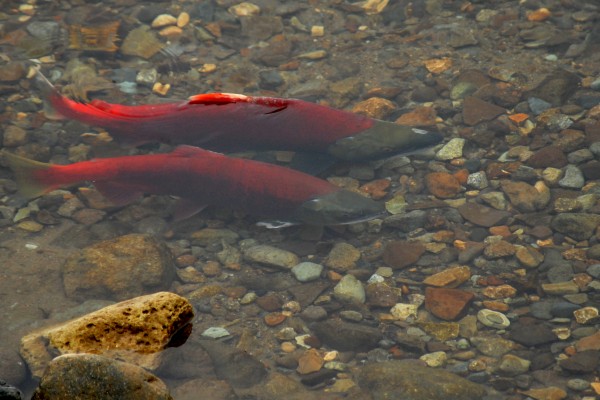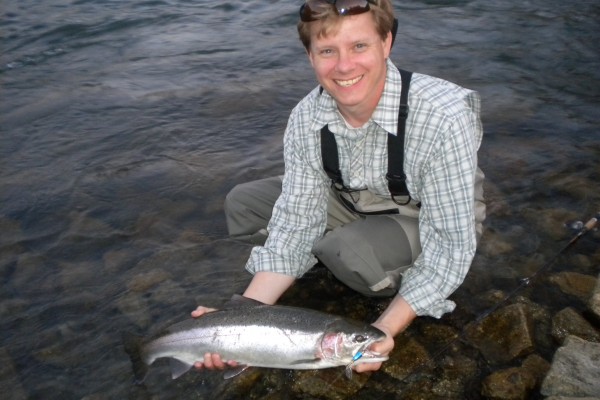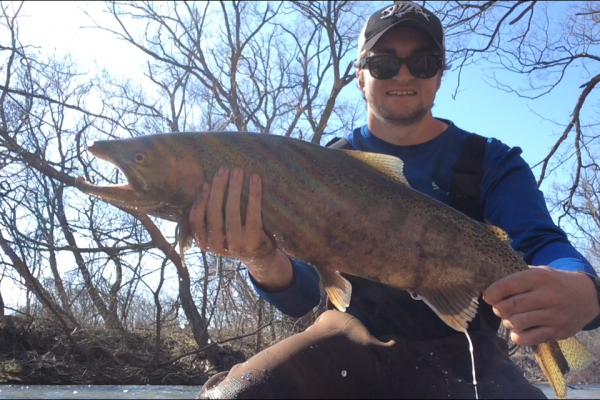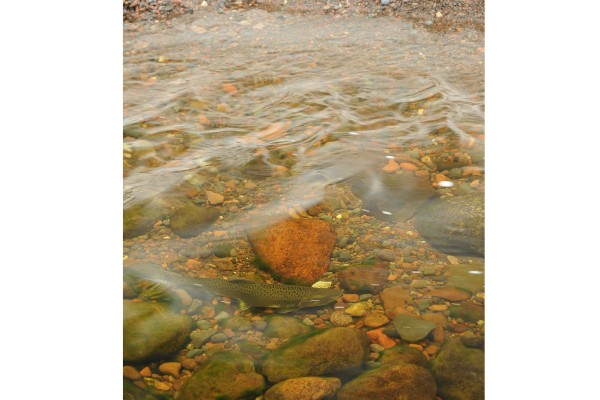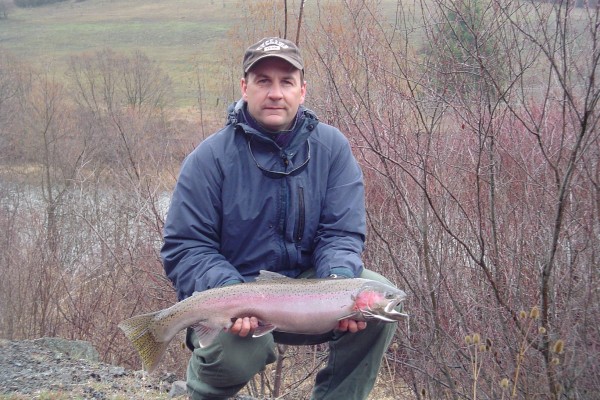North Central Division American Fisheries Society
Esocid Technical Committee
8 February 2015
Chair – Dave Kittaka: IDNR ([email protected])
Immediate Past Chair – Dave Woods: MDC ([email protected])
Chair Elect – Cory Kovacs, [email protected]
The following notes highlight discussions from the ETC business meeting held on the February 8, 2015, Hyatt Regency, Indianapolis, Indiana. Technical committee chairs in attendance at the business meeting were Steve Gilbert, WI sitting in for Jordan Weeks, WI, Dave Woods, MO, Nick Haunert, IN, Curtis Wagner, OH, Rebecca Krogman, IA sitting in for Jonathon Meerbeek, IA, Dave Woods, MO, and Dave Kittaka, IN
Others in attendance:
Janice Kerns UWSP Coop-unit
Michael Vasue UWSP FPSC
Nick Haunert Ball State University
Andy Richards IN DNR
Dylan Sickles IN DNR
Robin Bruegmann IN DNR
Matt Tomaso IN DNR
James Skipper IN DNR
Jeff Malwitz IN DNR
Jeremy Price IN DNR
Dave Kittaka opened the meeting of the North Central Division of the American Fisheries Society’s Esocid Technical Committee at 4 pm, February 8, 2015.
The Business Meeting minutes from the, Summer business meeting in La Crosse WI was approved without amendment.
Past and Future Leadership
Cory Kovacs from MI DNR has accepted the Chair Elect of the NCD-ETC. Cory is a fisheries biology stationed at the Newburg office in Newburg MI in the UP.
Below is Cory’s Business card:
Cory K. Kovacs
Fisheries Biologist
Eastern Lake Superior Management Unit
Michigan Department of Natural Resources-Fisheries Division
Newberry Operations Service Center
5100 State Highway M-123
Newberry, MI 49868
Office: (906)293-5131 ext. 4071
Summer Business Meeting
The 2015 summer meeting will be in Brookings SD on July 20 to 24. See announcement
International Pike Symposium Book Sales:
The price of the International Pike Symposium book was dropped to $15 after the winter meeting. Currently there are only 5 books left. If you are interested in a book contact Cory Kovacs.
2016 Hugh C. Becker International Muskie Symposium
The International Muskie Symposium with Muskies Inc. will be held in Minneapolis, MN March 13-15, 2016. Steve Pallo from IL is the Symposium Chair. See attached Muskie symposium announcement. It was suggest that this announcement be made available to the Southern division of AFS since they will be relatively close to the symposium. Dave Kittaka will make contact with Southern Division.
The WTC Chair Elect John Bruner, Alberta Canada, announced his intent to have the 2016 Summer Joint Meeting in Chicago, IL with meeting/workshop held in the Field Museum and a social at the Shed aquarium more to come as arrangements are finalized.
Budget
Andy Jansen submitted a budget break down of the ETC finances.
| 2014 Esocid | Description | Expenses | Deposits | Balance |
| 1-Jan | $2,521.48 | |||
| 23-Jun | plaque | $25.00 | ||
| 30-Jun | pike book | $15.00 | ||
| 30-Jun | ytd interest | $5.00 | ||
| $25.00 | $20.00 | $2,516.48 |
The State updates were informative and most all the states responded via email, which are attached below. The meeting discussion was interesting this year, the Indiana DNR south region fish hatchery managers attended the meeting and added an interesting perspective from the culture side of the Indiana muskie program. PIT tagging information from IA will be nice reference for the Indiana Webster Lake Broodstock survey in 2015.
Thanks to all that attended this year’s Midwest and the ETC meeting.
The meeting adjourned at 4:50pm.
Meeting minutes prepared by ETC chairman Dave Kittaka
HUGH BECKER MUSKIE SYMPOSIUM
Save this Date:
Muskies, Inc. Celebrates 50 years
Hosting the 2016 Hugh Becker
Muskie Symposium
In Minnetonka, MN. Along with the
50th anniversarycelebration!
call (888) 710-8286 or visit our
website www.muskiesinc.org
Update 2/3/15
TIME: March 13-15, 2016
PLACE: Minneapolis, Mn
Sheridan MPLS West, Minnetonka.
General Agenda:
March 13, Sunday, arrival, welcoming mixer/diner/professional angler discussions?
March 14, Monday, Presentations, 8-4 pm, Symposium diner
March 15, Tuesday, Presentations, 8-4 pm.
Chairman Steve Pallo please note my new email address: Steve Pallo [email protected]
Tech committee to include:
Tim Simonson Wi DNR [email protected]
Steve Kerr, Ontario MNR retired [email protected]
Dr. Derek Crane, Researcher, Lake Superior State U./(Minneapolis) [email protected]
First call for papers/abstracts will be coming out in next couple of months, followed by second call and final call for papers due by late fall 2015.
Please share this with the ETC and others, especially states to the East and West who may not be active in the ETC.
Next issue of “Fisheries” will have the initial listing for the symposium in the calendar for upcoming meetings/events for all American Fisheries Society members.
Please feel free to contact Steve Pallo for more information
2015 Joint Summer Meeting of the Centrarchid, Esocid, and Walleye Technical Committees- North Central Division of the American Fisheries Society
ANNOUNCEMENT AND CALL FOR PAPERS
Dates: July 20-July 24, 2015
Location: Dakota Nature Park Brookings, SD (http://www.cityofbrookings.org/index.aspx?NID=313 )
Lodging Location: Quality Inn Brookings 514 Sunrise Ridge Road Brookings, SD 57006
(1-605-692-9511; http://www.qualityinn.com/hotel-brookings-south_dakota-SD017)
Lodging
A block of rooms has been reserved until June 19th at the Quality Inn Brookings at a rate of $70 per night under the name American Fisheries Society.
Registration Cost
$70 for the entire meeting, which includes breaks and a fish fry Tuesday; lunch, morning and afternoon breaks, and catfish feed Wednesday; morning break Thursday. Students are ½ price. A continental breakfast is provided at the Quality Inn.
Continuing Education Workshop
A continuing education workshop, hosted at South Dakota State University (topic TBD) is tentatively planned for Tuesday July 21st.
Registration and Presentation Submittal
If you have a paper for inclusion, please contact Hilary Meyer at [email protected]. Meeting registration will be via email to Hilary. We will accept payment by cash or check at the door. Sorry, we are not equipped to accept credit cards or other forms of electronic payment. Deadline for registration is June 30, 2015.
Hope to see you there!
WTC Executive Committee – Randy Schultz, Chair; Hilary Meyer, Immediate Past Chair
State Chapter updates
Dakota Chapter Esocid Update
Prepared by Brian Blackwell
Northern Pike Bioenergetics in Lake Pactola, South Dakota, Natalie Scheibel
Bioenergetics models, along with temperature, diet, and growth data, were used to estimate the consumption of Northern Pike in Pactola Reservoir. Northern Pike under 600 mm acquired 71% of their total annual energy (% J/g/y) from small Centrarchids. Northern Pike greater than 600 mm obtained 50% of their total annual energy from Rainbow Trout. Based on annual consumption estimates and the cost of stocked Rainbow Trout, a single Northern Pike living to an average-age culminates in a cost of about $200 to $300. One management approach to reduce Rainbow Trout consumption by Northern Pike is to stock larger Rainbow Trout (355 mm), which would be less vulnerable to Northern Pike predation because of gape limitations.
Muskellunge Sampling in Eastern South Dakota, Brian Blackwell
Muskellunge Esox masquinongy have proven difficult to sample with standard fish sampling gears in South Dakota. We compared muskellunge springtime catches in two trap net sizes [large trap nets (1.5 x 1.8-m frames, 1.5-m diameter hoops, double throated, single 1.5 x 30.5-m lead and 19-mm knotless mesh) and small trap nets (0.9 x 1.5-m frames, 0.9-m diameter hoops, single throat, single 0.9 x 15.2-m lead and 19-mm knotted mesh)] and we estimated the population abundance of adult muskellunge in three eastern South Dakota waters. Sampling with both large and small trap nets was completed during the spring of 2013 and 2014 soon after ice-out. More muskellunge were collected in large trap nets than small trap nets at all three lakes. Total length of collected muskellunge was not significantly different between large trap nets and small trap nets. Low population abundance (i.e., < 0.5 fish/ha) limits catch per unit effort (CPUE) values in the waters we studied. As a result, the likelihood of collecting 75 to 125 individuals needed for robust analysis of length-structure indices is low and long-term monitoring is needed for population assessment. Sampling with large trap nets in the spring combined with population estimates will improve the ability to monitor and manage muskellunge when compared to sampling with small trap nets.
Iowa’s Winter 2015 Esocid Update
Prepared by Jonathan Meerbeek
Thirteen lakes and impoundments are currently being managed as Muskellunge fisheries in Iowa. In 2015, yearling muskellunge will be stocked into a 130-acre County Conservation managed gravel quarry in southeast Iowa to provide another unique angling opportunity for Iowans.
Big Creek/Brushy Creek Muskellunge Emigration Study (Principle Investigators: Ben Dodd [email protected] and Michael Weber [email protected])
Reservoir fish populations are often supplemented or maintained though stocking to provide anglers with angling opportunities. Anecdotal information from many states including Minnesota, Iowa, and Illinois suggests that a substantial number of these fish do not stay in the systems where they are stocked but instead escape downstream over spillways and through dams. To better retain walleye and muskellunge in Big Creek Lake, the Iowa DNR has installed a physical barrier at the spillway. The barrier consists of eight chain link top rails stacked in a horizontal fashion with 2” openings between rails. The barrier may be effective at stopping escapement of adult fish but escapement rates of smaller juveniles could still be high, negatively impacting biologists’ ability to increase predator densities. The effectiveness of this barrier at reducing fish escapement has not been evaluated; yet this information is needed before similar barriers can be constructed in other locations.
To quantify walleye muskellunge escapement from Iowa reservoirs with and without a barrier, we propose to install passive integrated transponder (PIT) tag antennas on the Brushy Creek (no barrier) and Big Creek (spillway has a barrier) spillways during the summer of 2015. Each year, stocked age-0 walleye and age-1 muskellunge will be injected with a PIT tag for individual recognition and stocked into both Brushy and Big Creek. Additionally, adult walleye and muskellunge will be collected in springtime from each reservoir using a combination of gill nets, trap nets, and electrofishing. Captured fish will be measured for length, weight, and gender and a PIT tag will be implanted before the fish is released. The PIT tag antenna will then be used to identify individual fish that pass over the spillway of each reservoir. Environmental data (e.g., temperature, water level, flow rates, time, etc.) will be monitored continuously and used to evaluate factors influencing muskellunge escapement. Escapement rates and influential factors will be compared between the reservoir with a physical barrier (Big Creek) and the control reservoir without a physical barrier (Brushy Creek). PIT tagging and recapture events will take place for 5 years from spring 2016 through fall 2020, providing sufficient time to collect information about escapement under a wide range of environmental conditions. This information will then be used to guide management decisions about barrier installation at the study reservoirs and other reservoirs throughout Iowa.
To complement our PIT tagging study and better understand walleye and muskellunge behavior, we propose to monitor movements and habitat use of these species though the use of acoustic telemetry in Big Creek. Fish will be tagged and then located during the open water and safe ice seasons using a handheld acoustic receiver. Fish locations will be marked with GPS and transmitter frequency, time of day, water depth, and surface temperature will be recorded. Fish locations and habitat use will be overlaid onto topographic maps and exported into GIS databases. Using GIS, movement rates, habitat use, home range size, etc. will be calculated. Additionally, the number of fish implanted with acoustic tags will provide an independent estimate of escapement and fish attributes (e.g., species, size) and environmental conditions (e.g., flow, temperature) will provide insights into mechanisms influencing escapement.
Factors Affecting Mercury Concentration in Iowa Fishes – (Principle Investigator: Darcy Cashatt [email protected])
Study Objective – Evaluate how mercury concentration in Iowa sport fish is related to fish trophic status, length, weight and age, and determine if these relationships are true across a variety of landform, lake type and limnological gradients. Use these relationships to provide anglers with information about mercury in Iowa sport fish that they can use to guide their decision on where to fish and what to harvest.
Figure 1. Mercury concentration (mg/Kg) for Northern Pike (natural lakes and upper Mississippi River) and Muskellunge (natural lakes) by total length (inches) and age.
Mercury concentrations of various sizes and ages of Northern Pike collected from natural lakes and the Mississippi River were all below 1.0 mg/Kg guideline for no consumption. Two Muskellunge were found to be above the 1.0 mg/Kg threshold.
Effects of passive integrated transponder (PIT) tag size and implantation site on tag retention, growth, and survival of juvenile muskellunge – (Principle Investigators: Mark Flammang [email protected] and Michael Weber [email protected])
Iowa DNR and Iowa State have been investigating the effects (survival and tag retention) of implanting three different sizes of PIT tags in two locations (body cavity and dorsal musculature) of small (6-10 in) Muskellunge. Mortality has been very low, but tag retention rates did differ substantially among tag sizes and locations (Figure 2). These results will be used to guide fisheries managers as they design projects to evaluate emigration.
| Musky PIT tag retention, 2013 |
Figure 2. Effects of PIT tag size and tagging location on tag retention in juvenile muskellunge, 2013 (top) and 2014 (bottom).
Missouri Muskie Report – Winter 2015
Missouri Department of Conservation
Dave Woods, Muskellunge Program Coordinator
Currently, five lakes in Missouri are managed for muskies: Pomme de Terre Lake (7,820 ac.), Fellows Lake (820 ac.), Hazel Creek Lake (530 ac.), Henry Sever Lake (158 ac.) and Lake 35, Busch Conservation Area (62 ac.). Henry Sever Lake is included in the program as a surplus stocking location only.
The Show-Me Muskie Project is a volunteer reporting program in which the Missouri Department of Conservation invites conservation-minded muskie anglers to help evaluate Missouri’s muskellunge management program. Volunteers include a wide cross-section of muskie anglers at all levels of skill and experience. Missouri’s Muskellunge Plan sets muskie angler catch-rate objectives, which can be documented most efficiently by anglers themselves. The 2014 Show-Me Muskie Project data is currently being received from anglers across the state. That data will be summarized and a report will be available in the Show-Me Muskie Project newsletter in the spring of 2015.
Due to poor hatchery survival of muskie fingerlings at Spirit Lake Fish Hatchery (Missouri’s source for muskie fingerlings) in 2013, staff was only able to meet about 37% of the stocking commitment for muskie lakes in Missouri that year. In the fall of 2014, some program lakes received an increased stocking rate to compensate for 2013’s shortage. In addition, Pomme de Terre receives a pulse stocking of 8,000 fish in 2014, which occurs in one out of every six years, as outlined in Missouri’s Muskie Management Plan. Muskies averaged 12.4 inches in length and stocking numbers are below:
Fellows Lake……………………………………………….1,486
Pomme de Terre …………….…………..……..….….8,263
Hazel Creek………………………….…………….…..…….880
Busch Lake 35………………………….……….……………..64
Henry Sever………………………………..……………..….318
TOTAL…….11,011
The Missouri Department of Conservation is partnering with the Pomme de Terre Chapter of Muskies, Inc. to resurrect a muskie fishing brochure no longer in print by MDC. While a redesign of the publication is scheduled for 2016, Muskies, Inc. offered to pay for an additional printing of the current Muskellunge in Missouri brochure until the updated brochure is available. The Pomme Chapter of Muskies, Inc. also purchased additional rolls of bird netting for MDC’s Lost Valley Hatchery. The bird netting is used to protect muskie fingerlings from predation in the hatchery rearing ponds. These are just mores examples of the productive relationship between Missouri muskie anglers and MDC.
Spring fyke-net survey data and Show-Me Muskie Project data from 2014 was provided during the ETC Summer Business Meeting and can be found in those meeting minutes.
Nebraska Esocid Technical Committee Report 2015
Prepared by Keith Koupal
The following report of activities was submitted to the Esocid Technical Committee meeting in July 2014. Nebraska has limited use of esocids within our systems. We are managing to stock both muskie and northern pike in the requested systems at 2-3 year intervals. Space to culture esocids to a desirable size and the expense involved with raising them to this size are limiting factors for increased production and stocking. Many waters seem unable to successfully recruit these species. Thus, a statewide 40 inch minimum is in effect for muskie and many stocked waters have a 30” minimum on northern pike. Recently, an interest in enhanced use of northern pike in our systems has been developed and future management may try to incorporate this esocid into our lentic communities. Stocking of advanced fingerling northerns (approximately 300 mm long) in October was employed in 2014 at most waters to achieve a better return to creel and try to augment sportfishing opportunities. Two main items are being investigated concerning esocids in Nebraska.
Northern pike production has hit a snag. There has been a decline in hatch percentage of broodstock spawned from our National Refuge lakes near Valentine Nebraska. An experimental design to test the efficacy of using saline and a buffer/saline mixture to enhance northern pike egg fertilization and subsequent eye-up in our Production Sections northern pike was employed this past spring. Eye-up percentage generally increased with the use of buffer solutions but was still below optimum values that were desired for management production (<60%) and variability of eye-up is still too high for staff to feel comfortable with the protocol. Additional trials are planned that will attempt to isolate the impacts of buffer solutions by splitting eggs from larger females into control and experimental units as well as reducing the amount of milt used for fertilization so milt source for both experimental units are from similar parent stock. Adult collection may move to Dewey Lake because individuals from this water have shown greater relative condition the past few years.
A northern pike tagging project was started at Lake Wanahoo in March 2012 to determine angler exploitation by biologist Jordan Katt (questions can be referred to him). This study plans to determine northern pike growth and survival in Lake Wanahoo. Northern pike are being collected with trap nets in the spring and are floy tagged. The 2014 population estimate was 406 (1/acre), which was a 77% decrease from 2013. Several factors likely caused the estimate to decrease that drastically, such as low spring water levels (up to 4 foot lower than previous years) and wider than normal temperature fluctuations. Mean growth of male northern pike was 78 mm/year while mean growth for females was 114 mm/year . Tagging is scheduled to continue in 2015.
The only other esocid mention in research activity was a compilation of muskellunge sampling, growth and condition for all Nebraska waters. This exercise used the existing sampling database from the Nebraska Game and Parks Commission Fisheries Division to determine growth curves, relative weights. The lack of individuals captured by standard sampling techniques indicates a need to specifically sample for this species or potentially cooperate with anglers who may be handling more individual fish than sampling gear.
Ohio Muskellunge Program: ETC Report
Ohio chapter Esocid winter update 2015
Prepared by Curtis Wagner and Kevin Page, ODNR-Division of Wildlife
Reservoir Escapement and Angler Use of Stocked Muskellunge in Ohio – Project Update
Within four reservoirs, all advanced fingerling muskellunge stocked from 2013 – 2022 are being implanted with passive integrated transponder (PIT) tags. PIT tags are a reliable marker for monitoring muskellunge over long time periods. Emigration of PIT tagged muskellunge is being monitored using PIT tag readers (Oregon RFID Inc.) stationed on shore, below dam spillways. Readers are housed in a PVC case secured to a nearby structure (pole, building), or within nearby structures (gauging station, pump house). Readers are powered using either deep-cycle 12V marine batteries maintained using solar power (Salt Fork Lake) or by connecting directly to AC power located onsite (Alum Creek Lake, Clear Fork Reservoir, and Leesville Lake). Antennas (0/1 AWG welding cable or smaller) are extended from the reader across the width of the spillway and buried several inches within the substrate. Similar designs have been used previously to monitor fish emigration through dams and movement of stream fishes. In addition to PIT tags, all muskellunge stocked within these reservoirs are being tagged with an individually numbered (and yearly cohort colored) T-bar anchor tag (Floy Tag and Manufacturing; type FD-94). Together, PIT tag and T-bar tag data are expected to provide a detailed picture of muskellunge emigration and other population dynamics.
Monitoring of tagged muskellunge within reservoirs is being conducted through reporting of tagged fish by anglers. Anglers will report tagged fish using a designated 1-800 phone number or online via the Ohio Muskie Angler Log (https://apps.ohiodnr.gov/muskielog/welcome.aspx). Hand-held PIT tag readers (Biomark 601 Reader) have been supplied to the most productive anglers (5 anglers per reservoir) chosen based on previous catch reports reported in the Muskie Angler Log. The top five anglers for each reservoir caught 40-50% of that reservoir’s fish reported during 2008–2011.
In 2013 and 2014, over 16,000 muskellunge have been tagged and stocked, with good post-stocking survival (88% in 2013; 84% in 2014). To date, no tagged muskellunge have been detected below dams. Twelve tagged muskellunge (age-0 and age-1) have been reported by non-muskellunge anglers. An EF sampling trip below Leesville spillway found no tagged muskellunge and one large untagged muskellunge. Historically, ad hoc sampling within dam spillways have only found large muskellunge. A previous long-term tagging study on Clear Fork found that few age-1 and age-2 muskellunge emigrated and a recent published study from Illinois suggested that notable muskellunge escapement begins around sexual maturity (Wolter et al. 2013, NAJFM 33:829-838). Consequently, we do not expect many tagged muskellunge to be detected below the reservoirs for another year or two.
Tagging Trials – Ongoing Assessments Update
Currently, we are using 12 mm tags in the above mentioned reservoir escapement study. However, we are aware that if we increase to a larger PIT tag size, 23 mm for example, we may increase our spillway antenna read range by roughly 300%. Therefore, in a hatchery environment, we tested survival of advanced fingerling muskellunge (248-325 mm TL) implanted with 23 mm PIT tags during fall 2014. During the first trial we implanted tags in the intraperitoneal cavity of 50 fish. Only 54% survived to the following day. For the second trial we implanted 25 fish in the intraperitoneal cavity and 24 fish in the dorsal musculature. Muskellunge exhibited 100% survival to the following day for both groups. We also fin clipped 25 fish as a control during the second trial. All fish, including those from the first trial, were transferred to a pond the following day to be held overwinter. Six fish from the second trial have been observed dead: 1 dorsal implanted (currently estimated at 96%survival); 3 abdomen implanted (currently estimated at 88% survival); 2 controls (currently estimated at 92% survival). We will know final 6-month survival estimates when we drain the pond in spring 2015.
Ohio Muskie Angler Log 2014 Update
The online Ohio Muskie Angler Log (MAL) (https://apps.ohiodnr.gov/muskielog/welcome.aspx) was launched online in 2008. Anglers register by setting up a username and password, much like any other user-based internet tool. Consequently, the Ohio Division of Wildlife gets basic user information for a unique angler that can be used in fisheries analyses while the muskie angler has the ability to tailor their online experience and keep their catch and trip diary online. Of important note is that anglers can go into their preferences and opt in to declare themselves as Reporting All Trips angler. This allows us at the Ohio Division of Wildlife to filter the data to include only those who declared this status when calculating catch-per-unit-effort estimates, while also allows anglers who only want to log in their caught fish to do so without skewing our data analyses. The MAL is a collaborative effort between the Ohio Division of Wildlife and the organized muskellunge clubs throughout Ohio, whom we have a great relationship with.
Below are some factoids and figures from a recently compiled 2014 Muskie Angler Log summary distributed to the clubs.
MAL Highlights:
| • 16,499 Ohio muskies reported into the MAL since 2008 launch• 1,904 Ohio muskie anglers have registered in the MAL since 2008 launch• In 2014, 181 anglers reported 2,333 muskies• 1,192 trips were reported by 83 anglers who committed to report all of their trips during 2014 • Statewide average catch rate in 2014 was one muskie for every 8.4 hours of angling
• The release rate of reported muskies since 2008 is 98.8% |
MAL 2014 Catch Update:
2013 & 2014 Catch Rates: Lake-by-Lake Comparisons:

Monthly Catch Rates 2014:
MAL Participation Over Time:
- We are seeing a decline since the 2008 launch of casual anglers (those reporting 1-4 fish/yr) while maintain a steady base of “avid” anglers reporting 5 or more fish/yr. These categorizations are based solely on number of reported fish, not necessarily trips or hours fished.
Wisconsin Esocid Technical Committee Report-February 2015
WI Representative: Jordan Weeks
Muskellunge Team charge
Implement Wisconsin’s Muskellunge Management Plan and coordinate muskellunge management statewide. Specific assignments are:
- Develop/review regulation guidance and proposals,
- Develop/review stocking guidance and stocking plans,
- Develop/review assessment metrics and sampling protocol,
- Review/update management plan; assess status of fishery,
- Identify research needs; coordinate statewide evaluations,
- Maintain/update musky water classifications.
Regulations:
Muskellunge Seasons and Size Limits on Wisconsin-Minnesota Boundary Waters and Nemadji River, Douglas County:
This proposal would establish uniform seasons and size limits for muskellunge on the WI-MN boundary waters as well as the Nemadji River, Douglas County. The open season would run from the Saturday nearest Memorial Day to November 30 (rather than March 1), and would require kept muskellunge be at least 50 inches (rather than 40 inches) on the Mississippi River and St. Croix River boundary waters and the Nemadji River, Douglas County. The minimum length limit on the St. Louis River is already 50 inches.
This season change was requested by anglers in the Duluth/Superior area for the St. Louis River and the length limit change will ensure that regulations are consistent between the Wisconsin and Minnesota waters of the Mississippi, St. Croix and St. Louis rivers, reducing angler confusion and improving ease of enforcement.
Question-Do you favor establishing a uniform open season (from the Saturday nearest Memorial Day to November 30) and requiring that kept muskellunge be at least 50 inches on the WI-MN boundary waters (Mississippi, St. Croix and St. Louis rivers) and the Nemadji River, Douglas County?
Spider Lake Chain, Tiger Cat Chain, Mud/Callahan lakes, and the North Fork Chief River, in Sawyer County:
This proposal would allow a muskellunge to be kept if it is at least 40 inches in Spider Lake Chain (includes Big Spider, Little Spider, Clear, Fawn, and North lakes), the Tiger Cat Chain (includes McClaine, Upper Twin, Lower Twin, Tiger Cat Flowage, Burns, and Placid), Mud/Callahan lakes, and the North Fork Chief River from the Tiger Cat dam downstream to Mud Lake in Sawyer County.
These waters have high numbers of slow-growing muskellunge and are currently managed under a 28-inch minimum length limit. The daily bag limit would remain at 1 fish.
The management goal for these waters is moderate- to high-density muskellunge populations that support high angler catch rates and provide occasional opportunities to encounter memorable-size fish. This regulation proposal is expected to have no biological impact. It will meet social desires (based on responses to a recent Conservation Congress advisory question) to protect these fish with a higher length limit rather than relying on a voluntary release rate that is presumed to be as high as 98%.
Question-Do you favor allowing a muskellunge to be kept if it is at least 40 inches on the Spider Lake Chain (includes Big Spider, Little Spider, Clear, Fawn, and North lakes), the Tiger Cat Chain (includes McClaine, Upper Twin, Lower Twin, Tiger Cat Flowage, Burns, and Placid), Mud/Callahan lakes, and North Fork Chief River from the Tiger Cat dam downstream to Mud Lake in Sawyer County?
Wisconsin Muskellunge Standing Team Notes
August 26, 2014
Cabela’s, 1499 Lombardi Avenue, Ashwaubenon, WI 54304
- In attendance – Tim Simonson (CO), Scot Stewart (SAD), Aaron Cole (NAD – Barron), Steve Hogler (EAD – Green Bay), Dave Rowe (SAD –Fitchburg), Jordan Weeks (WAD – La Crosse), Greg Matzke (NAD – Florence), Luke Roffler (SAD-Sturtevant), Jeff Kampa (SS-Spooner), Mark Luehring (GLIFWC-Odanah), Don Gilbert (Muskellunge Clubs Alliance of Wisconsin), Joe Weiss (Congress-Washburn Co.), Roger Sabota (Congress-Oneida Co.), John Aschenbrenner, Dan Isermann (UWSP), Janice Kerns (UWSP), Justin Van De Hey (UWSP), Mike Donofrio (EAD-Peshtigo), Steve Fajfer (Wild Rose Hatchery), Jesse Landwehr (Hatchery Supervisor), Mike Baumgartner (Besadney Anadromous Fisheries Facility), Max Wolter (NAD-Hayward). A special THANKS to members of the Titletown Chapter, Muskies, Inc., for providing interested team members with an opportunity to fish out on Green Bay, including Bob Volm and Bill Gerndt for coordination, and to Ron Myslik, Steve Haas, and Mike Wichmann for sharing time in their boats! And, thanks to John Aschenbrenner, who also took a couple of us out fishing! THANKS GUYS!
- Team Structure, Charge, and Work Plan – We reviewed the team structure and team charge (Musky Team Web Site) – no changes were suggested. Outstanding Work Plan objectives: a) Explore the idea of changing the 28” minimum lakes to “no minimum” and to also consider a protected slot proposal, if accompanied by a convincing modeling effort; b) To specifically consider removing the 2500 cap on selected lakes to allow for more efficient management of these fisheries. One idea was to cap small lakes to provide enough fish for larger lakes. We will explore the implications of this idea and discuss at a future meeting; c) add a habitat element to our general charge, to specifically look at the weed control issue as it relates to fish mortality, and to develop more specific research topics related to bulrushes, critical habitat designation/sensitive area designation, etc.; d) pursue the use of fin rays for aging muskies (including validation of fin rays from known-age fish), and exploring the idea of PIT tagging every musky handled in our surveys (may require external funding).
- Habitat Protection and Improvement – a) AIS Plant Control – impacts on fish – Andrew Rypel (SS) was hoping to attend but was unable to make it. He provided a write-up of a proposal to evaluate the impacts of plant management on fish populations. The proposal was distributed to team members (via email), who provided comments directly to Andrew; b) WI Conservation Congress WWSC – Habitat Sub-committee – Joe Weiss provided a brief update on an advisory question that was being developed for the 2015 Spring Hearing questionnaire, related to seeking support for more research and on-the-ground habitat management in warm-water systems.
- Harvest Regulations – The following proposals were reviewed and discussed:
- a) 2014 Conservation Congress Resolutions (Link to 2014 Resolutions):
- 030214 – 50” minimum length limit – Holcombe and Wissota, Barron (63-12), Brown (21-16), Chippewa (11-32), Dunn (65-13), Eau Claire (63-18), Trempealeau (21-9), TOTAL (244-100) – Approved;
- 050114 – Reinstate dark-house spearing WI/MI waters Brown (26-16), Marinette (22-9) – Reject;
- 080114 – Allow trailing one line with live bait while casting (38-18) – Defer to statewide trolling proposal;
- 640214 – Allow trailing one line live bait while casting – (34-41) – Defer to statewide trolling proposal;
- 640514 – Allow trolling while positioning when fishing (39-26) – Defer to statewide trolling proposal.
- 2015 Fisheries Management Proposals:
- 50” minimum length limit on Garden and Jackson Lakes, Bayfield Co. (connected to Lake Namekagon) – Approved (could Garden be considered housekeeping?);
- Eliminate 3-line trolling in 5 Oneida County Lakes – defer to statewide trolling proposal;
- Eliminate 28” minimum and revert to statewide 40” – Spider Lake Chain, Tiger Cat Chain, Mud/Callahan Lakes, Chief River (Sawyer County); Solberg Lake (Price County) – Approved.
- 50” minimum length limit/Saturday nearest Memorial Day to November 30 season on WI-MN boundary waters – Approved.
- 2017 Fisheries Management Proposals:
- Statewide Trolling Proposal – Because the rule adopted by the Natural Resources Board in May 2014 included a 3-year sunset, we’ll need to come up with a new proposal for the 2017 Spring Fish and Wildlife Hearings (to be effective in 2018). We discussed the logistics but no specific proposals were advanced; this topic will need to remain on the front burner.
- Information and Education – Max Wolter gave us an informative presentation on the work he and Jeff Kampa are doing in the Hayward area with PIT tags and using local guides and Muskies, Inc., club members to record recaptures of tagged fish. He discussed the many benefits of the tagging (and working in cooperation with area anglers), including individual growth increments, spawning site fidelity, stocking success, migration rates, and estimation of population size and survival. There are some issues with data management (particularly with stocking tagged fish, in terms of getting that information into the database), but those issues are being addressed, so the new interface should be well-equipped to handle PIT tags into the future.
- Propagation/Stocking
- Comparative Survival of pellet-reared muskellunge – We received an update on the study from Justin Van De Hey and discussed logistics with Steve Fajfer for the upcoming fall stocking and evaluation, including schedules for the pond harvest and hauling, and we reviewed the methods for the fall shocking. In addition to the established methods, we recommended that any yearling fish captured should be PIT Tagged for future identification.
- Implications of eliminating the 2500 fish Cap on large waters – I had hoped to start the discussions, but we did not have sufficient time to discuss this issue. We will carry it over to the next meeting.
- Brood Stock Management
- 2014 Spawning/rearing report – A written spawning report was provided for AOH by Bruce Underwood (unable to attend); GTH was unable to provide a report due to commitments related to the anniversary celebration scheduled at that facility. I will try to get a report from Neal and send it out.
- Evaluation of the Brood Stock Management Plan – Update – Justin Van De Hey provided an excellent summary on the evaluation of our brood stock management plan, a study that was recently completed by Zeb Woiak. Generally, the plan is working as designed and we are doing a decent job at stocking a product with the appropriate genetic diversity.
- GL Spotted Musky Update – Steve Hogler provided an update on the GLS musky program. Wild Rose has received about 12,700 fingerlings from Lake St. Clair via Michigan DNR in exchange for fingerlings from AOH for stocking in the Upper Peninsula. The fish will be reared overwinter and into next summer and stocked in the GLS brood lakes as yearlings (15”+). Steve expects to have about 8,000 available, in total; remaining fish will be stocked towards GLS quotas. Jesse Landwehr and Mike Baumgartner also provided an update on pond improvement at the Besadney AFF (Kewaunee). They will be expanding production of GLS muskies from Fox River eggs to 2 ponds at BAFF for stocking directly back into Green Bay. Much financial support has been pledged by local musky clubs and the Musky Clubs Alliance to complete this project.
- Muskellunge Surveys and Assessments – We discussed three topics related to surveys and assessments:
- There was a proposal at our last meeting that we investigate the idea of PIT tagging ALL muskies handled in our surveys. Based on a quick summary of the total number of fish entered in the database annually from 2005-2013, the average number of fish handled was about 1,953. That would equate to a total cost per year of about $4,590. After some discussion, it was agreed that we proceed with this recommendation, modify the FM Handbook section on musky management, secure funding, and
- Validation of fin-ray aging with known-age (PIT tagged) fish – This project is ongoing, with some effort in NW WI, under the direction of Jeff Kampa. We would like to see a more comprehensive effort to inventory all the known-aged fish around the state. Derek Crane, a research associate with Lake Superior State University, has expressed an interest in coordinating an effort to pull all this information together. He will be working with Jeff and Dan Isermann to develop a proposal and seek funding from the Hugh Becker Foundation.
- Research
- Evaluation of Methods to Estimate Musky Population Metrics in Northern WI Lakes – Janice Kerns and Daniel Isermann, UWSP, have developed a project proposal to evaluate variability in muskellunge populations through time. They will be conducting back-to-back population estimates on a few selected trend lakes in order to measure inter-annual variation in population size. A copy of the study proposal was emailed to team members for review. Comments should be returned to me, Janice or Dan.
- Dan Isermann is working on developing a project proposal to study fingerling muskellunge behavior (and survival) just after stocking with radio telemetry. He will also be seeking funding, including writing a grant application with the Becker Foundation.
- We spent some time reviewing our research needs and priorities with Jeff Kampa. Jeff compiled the results of this effort, which was used in a larger exercise for Science Services to develop broader, program-wide priorities for research in the coming biennium. The following were identified and ranked as “High” priority by the Musky Team: Age validation of nonlethal aging structures; Performance of pellet-reared vs. minnow-reared fingerling muskellunge; Efficacy of iodophor treatment of muskellunge eggs for control of VHS; and Complete the spawning habitat model. The following topics were ranked as “Medium” priority by the team: Validate existing methods and develop alternative methods to estimate population metrics for adult muskellunge in northern lakes; and development of musky habitat restoration techniques. The following were ranked as “Low” priority: Determine the impacts of trolling on muskellunge populations; and Influence of Climate Change on muskellunge.
- FYI – Upcoming Meetings
- Fall WDNR Biologist’s Meeting – October 22-23, 2014 – Oshkosh
- 2015 Musky Team Meeting – Late August, Green Bay
- International Musky Symposium, Muskies, Inc., Twin Cities, Spring 2016
| Research Priorities Identified by Fisheries Management Species and Policy Teams | |||
| MUSKELLUNGE | |||
| # ID | Project title | Priority | Summary |
| 1 | Age validation of nonlethal aging structures | H | Accurate age determination of muskellunge using nonlethal aging structure is needed to determine appropriate stocking strategies and rule proposals. Anal fin rays appear to provide clear annual growth increments and be collected without sacrificing fish. Several year classes of stocked muskellunge are recruiting to adult sizes and could provide known age samples to validate anal fin ray ageing. Age validation of scale samples can also be conducted and age correction factors may be developed for scale aging. |
| 2 | Performance of pellet-reared vs. minnow-reared fingerling muskellunge | H | Rearing muskellunge on a pellet diet and finishing with fish forage is less costly and reduces biosecurity risks compared to exclusively rearing fish on a fish forage diet. We recommend continuing the production and performance evaluation study that is underway. |
| 3 | Efficacy of iodophor treatment of muskellunge eggs for control of VHS | H | The current treatment protocols to eliminate VHS from eggs collected from wild broodstock were developed with the best available science. Specific studies validating the efficacy of VHS treatment of muskellunge eggs would be useful to facilitate acquiring gametes from sources populations found in systems containing VHS. In particular, the Great Lakes spotted muskellunge restoration program in Green Bay would benefit from reliable disinfection techniques that would allow Wisconsin to obtain gametes from Great Lakes sources. |
| 4 | Validate existing methods and develop alternative methods to estimate population metrics for adult muskellunge in northern lakes | M | Ceded territory safe harvest levels are based on adult population estimates. Mark recapture population estimates are used for up to two years after the estimate. A regression model is used to predict adult abundance when recent estimates are not available. This project would validate existing models and metrics used in modeling as well as develop alternative models to predict adult muskellunge abundance. |
| 5 | Complete spawning habitat model | H | An incomplete spawning habitat model should be finalized and validated to direct restoration projects on systems with degraded spawning and to identify potential spawning areas in systems being surveyed. |
| 6 | Determine the impacts of trolling on muskellunge populations. | L | The biological effects of trolling on muskellunge is a frequently debated issue. Obtaining additional scientific information on trolling catch rates compared to other angling methods and knowing the fate of troll-caught fish could address important questions in this debate. |
| 7 | Habitat Restoration | M | Habitat improvement projects for muskellunge are uncommon partly due to a lack of information on appropriate approaches. The Warmwater Committee of the Conservation Congress has expressed an interest in conducting more warmwater habitat improvement projects and would like guidance on conducting restoration work. |
| 9 | Influence of Climate Change on muskellunge | L | Climate change has been implicated in habitat and community changes in aquatic and terrestrial habitats. We lack information on direct and indirect effects of climate change on muskellunge populations. Climate change impacts on muskellunge could be dovetailed with ongoing climate change research. If existing climate change research is unable to address impacts on muskellunge a directed effort to describe potential impacts and suggest mitigation strategies should be undertaken. |
Indiana Esocid Technical Committee Winter Update 2015
Prepared by David Kittaka IDNR
ETC chairman
Indiana AFS
Muskellunge Tracking
Nicholas Haunert , Ball State University, Muncie, Indiana
The objective of this study was to determine the movements and habitat selection of stocked age-1 muskellunge in Eagle Creek Reservoir. Forty, 12 inch juvenile muskellunge were provided by the Indiana Department of Natural Resources and were tracked in Eagle Creek Reservoir using radio tags. The tags were surgically implanted at East Fork State Fish Hatchery in March of 2014 and stocked on March 29 at the marina in Eagle Creek Park. The tags had a battery life of 257 days and tracking is taking place weekly. Fish were tracked from March to December. Results suggest muskellunge moved little throughout the reservoir and remained close to the shoreline during the tracking period. The fish selected timber the most over other habitat types. A habitat estimation of Eagle Creek Reservoir found that less than 5% of the reservoir was typical habitat for muskellunge. Additionally, during the last week of April, 24 of the fish disappeared. Some of the remaining fish also disappeared as the summer continued. There was one fish found in a bordering gravel pit and six were found upstream in Eagle Creek. Also, four fish were tracked on shore in July. The remaining missing fish could have been preyed on by predatory birds, passed through the dam, or traveled further upstream out of the reservoir.
General Survey
The general survey of Eagle Creek Reservoir began during the middle of July to study how stocking muskellunge are affecting other fishes. This survey has been conducted annually from 2012 to 2014. A variety fish species have been collected although no muskellunge were collected during the survey.
Webster Lake
North Webster Indiana
North Region Fisheries Supervisor
IDNR’s Division of Fish and Wildlife
Columbia City, Indiana
Angler concerns over a lack of small fish prompted our biologists to take a closer look at spring trapping data collected during our annual brood collection effort. This revealed a concerning trend of an increasing average size of fish collected and a steady decline in the number of muskies < 34 in. The results seem to imply recruitment problems. There are a number of hypotheses as to what may have changed since the heyday of the mid 2000’s including a decline in size and condition of muskie fingerlings being stocked, habitat issues related to aquatic vegetation management, and predation of young muskies by a dense adult population. To gain a better understanding of what the Webster Lake population look like, we plan to repeat an extensive spring trapping survey, a standard fishery, and an angler creel survey that were completed in 2005. Steps have already been taken to grow the hatchery fish larger in hopes of correcting the issue. We also plan to split our 2015 year class stockings into two lots, one of which to be stocked in late October (3/acre) and the other to be stocked in spring of 2016 (2/acre). We intend to PIT tag all of these fish for up to 3 years to help assess recruitment of both lots into the fishery. Finally, while past creel surveys indicate that harvest of muskies is very low, as a precaution to protect our broodstock source, we have proposed increasing the minimum size limit on muskies in Webster Lake from 36 inches to 40 inches.









